At the boundaries of the Japanese archipelago, Hokkaido (北海道), whose kanji means “Path to the Northern Sea” is the northernmost island in Japan. The “Japanese Siberia” is situated in the Sea of Okhotsk, at the gateway of Russia. This geographical location on the Pacific Ring of Fire announces the eruptive nature of Hokkaido.
The National Parks of Hokkaido is considered among the most beautiful nature reserves in Japan. Their wide-open spaces are the hallmark of wild and untamable lands. In addition to the forests — which cover nearly 70% of the territory — mountains, active volcanos, and caldera lakes make up the natural setting of Hokkaido.
While the quiet is only interrupted by the wind in the leaves, the roar of the volcanoes, and the waterfalls gushing out from the mountains, this realm of Fire and Ice seems to be blessed earth. Here, we come to Japan’s Far North, and our list of the four most beautiful National Parks to visit in Eastern Hokkaido.
- Daisetsuzan, volcanic mountains, and crystalline lakes
- Akan National Park, caldera lakes in the shade of Mount Meakan
- Kushiro-Shitsugen National Park, the largest wetlands in Japan
- Shiretoko Peninsula, a sanctuary of wildlife at the world’s end
1. Daisetsuzan, volcanic mountains, and crystalline lakes
In the heart of Hokkaidō, the Daisetsuzan National Park (大雪山, which means “big snow-covered mountain”) is the biggest National Park in Japan. The volcanic mountain range is covered by primaeval forests and Alpine flora, crystalline lakes, and high plateaus. In the valleys, the road leads to spa resorts, hidden natural pools, and flower fields.
Farm Tomita
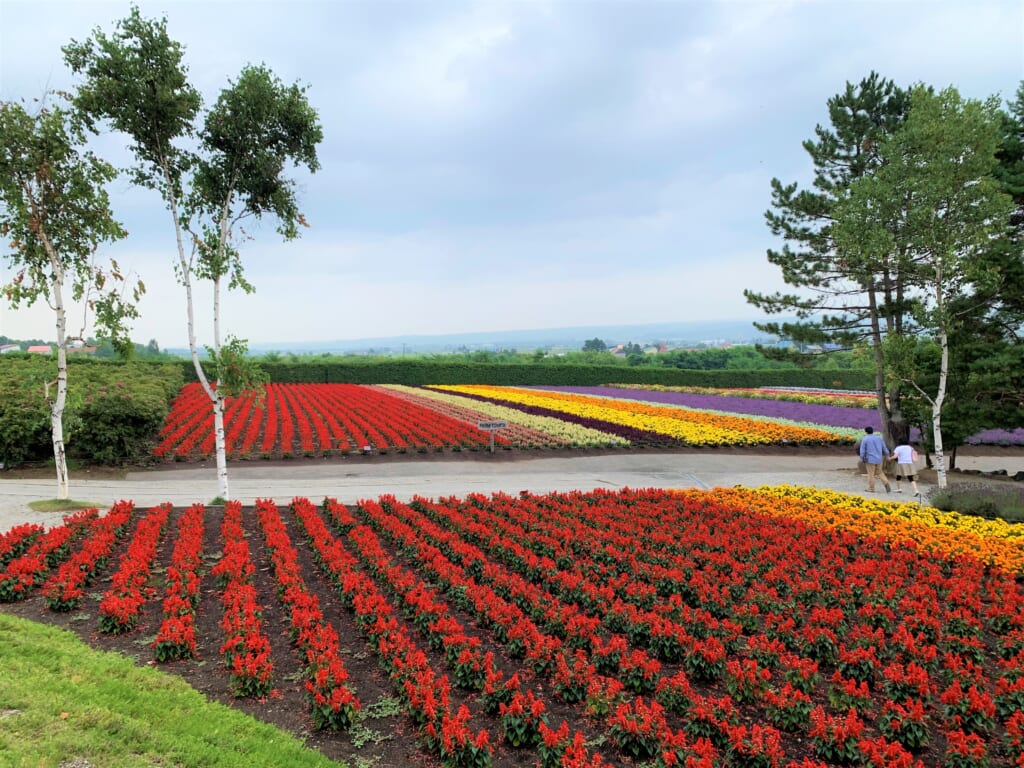
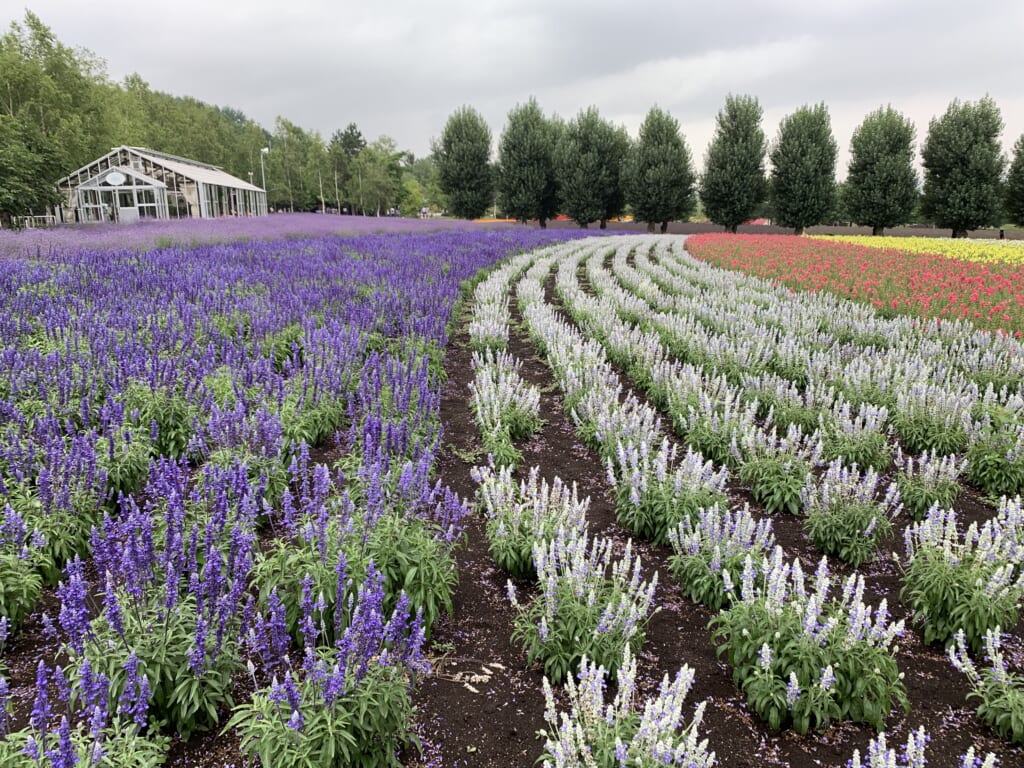
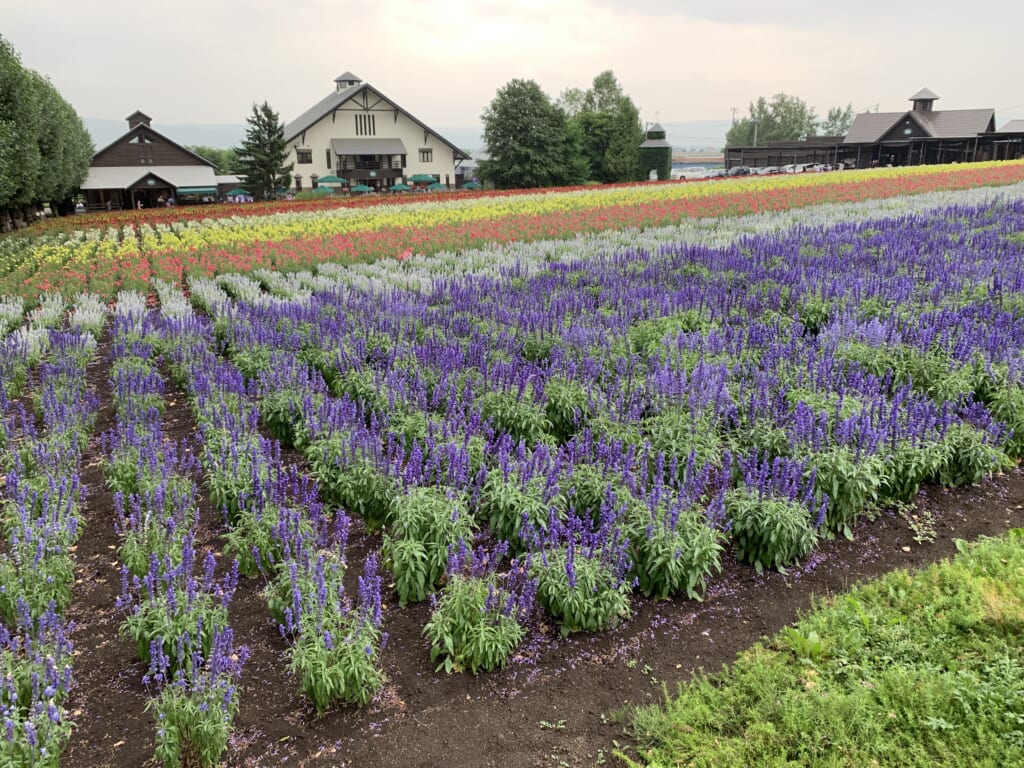
At the gates of the park, between Biei (美瑛) and Furano (富良野), the journey begins in the flower farms, where carpets of flowers cover small valleys. Here is Farm Tomita, among the most famous and most photogenic in the area. In the middle of the summer, the flowers are in full blossom. Even if the cloudy sky fades the hues, lines of flowers with carefully chosen shades hug the curves of the hills and shape flower rainbows. I walk delightfully along the furrows marking out the flower fields. The Farm Tomita is specializing in lavender, and I breathe in deeply these fragrances.
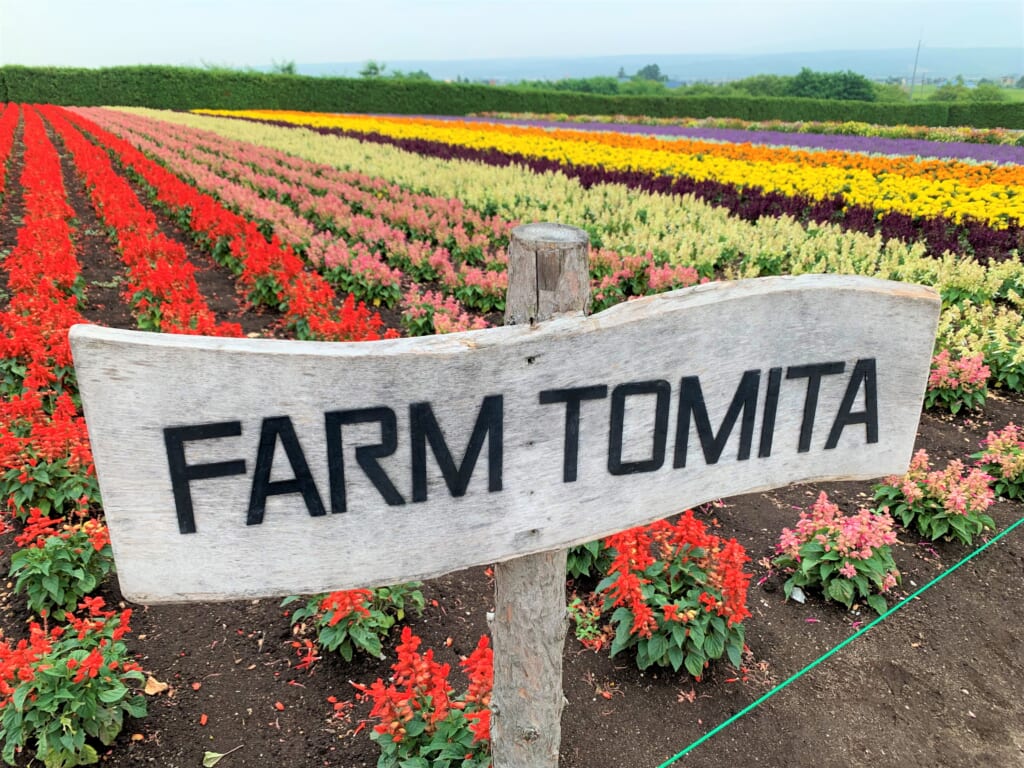
But the Daisetsuzan Park is above all a mountain land, dominated by a range of volcanic mountains that demonstrate an Alpine style. Their summit, the Mount Asahidake (旭岳), is also Hokkaido’s peak (2,290 m). Between the mountains, gorges are covered with forests, and valleys are sprinkled with onsen of Asahidake and charming wooden chalets.
Respectful of the Forces of Nature, the Ainus, the native people of Hokkaido, named the place “Kamui mintara”, which means “the gods’ playground.” Even nowadays, the Daisetsuzan National Park remains a centre of their spirituality.
Spa Resort of Sounkyo Onsen
Crossing point in the park, the spa resort of Sōunkyō Onsen (層雲峡, “gorge of the clouds”) is nestled in a gorge shaped by eruptions and erosion. Waterfalls hurtle down the mountains to the depths of the canyon. Here, in the threatening shadow of the mountains, I sink into a wet forest, until I arrive at Ryusei Falls (流星の滝) and Ginga Falls (銀河の滝). Often enveloped in the mist, like today, these twin waterfalls fall sheer from the cliffs.
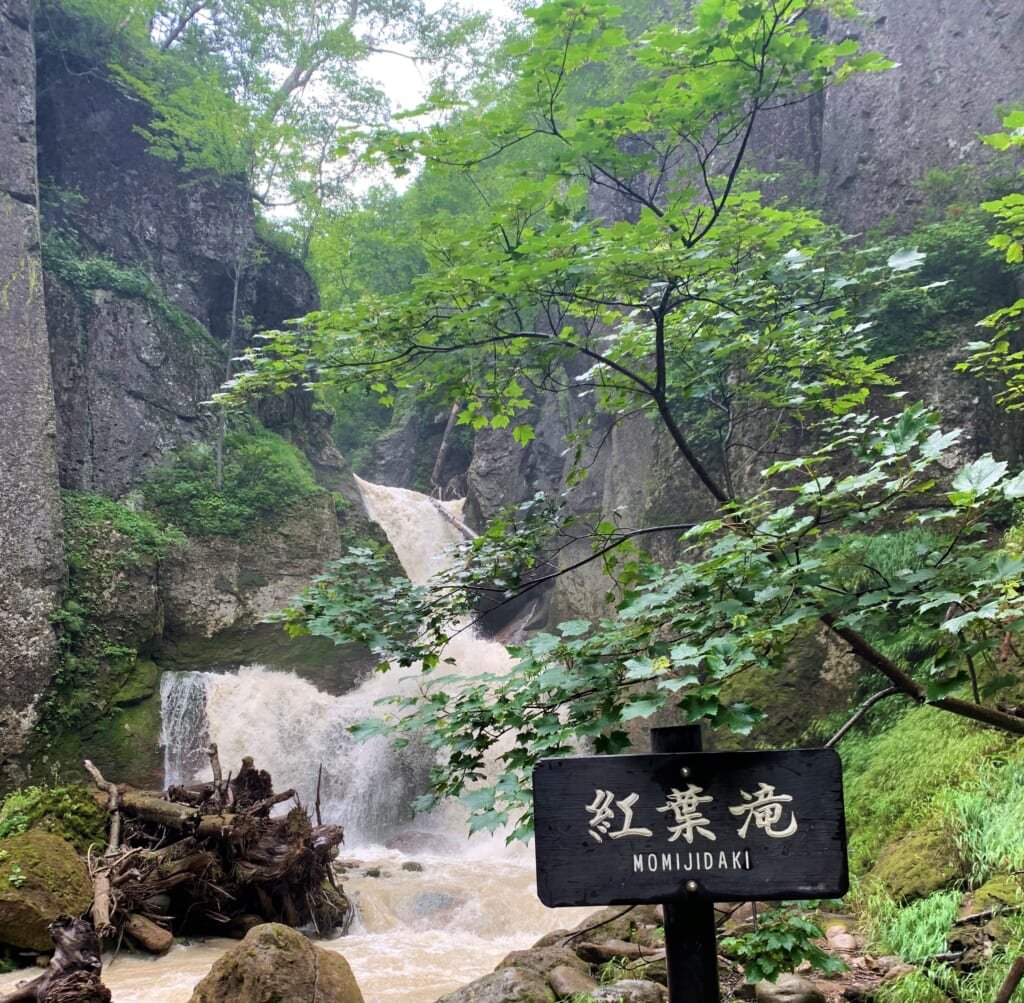
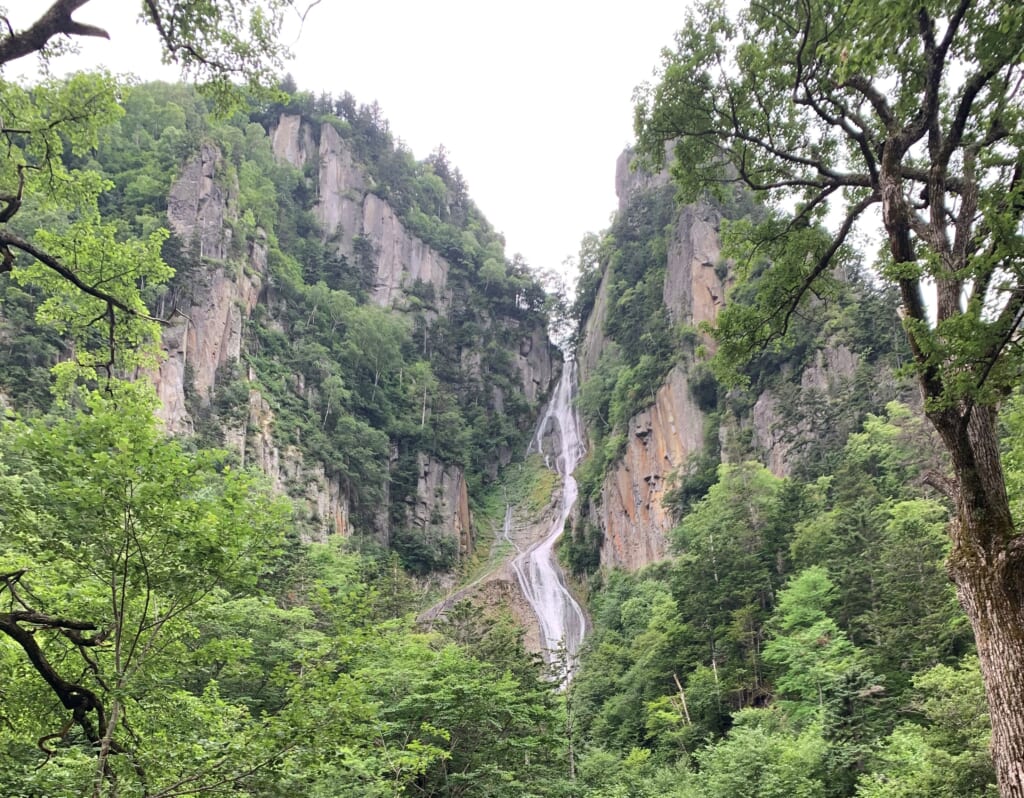
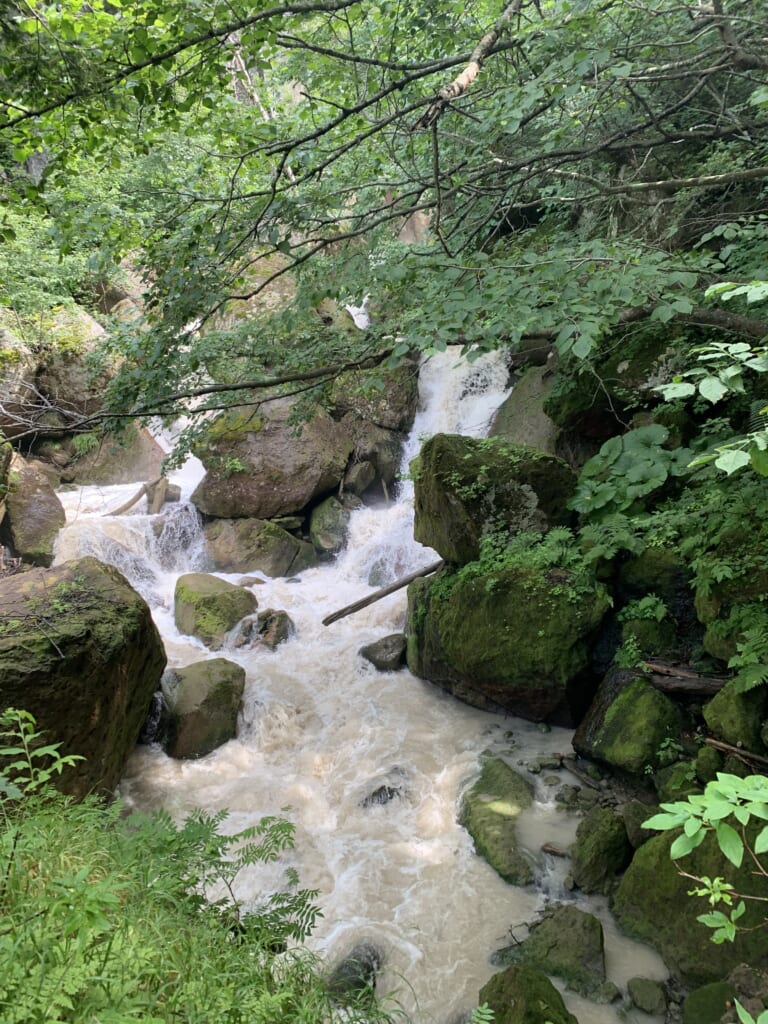
From Sōunkyō, a ropeway leads to the heights of Mount Kurodake (黒岳). As the ropeway lifts above the maple trees, the volcanos’ peaks seem to play hide and seek with the clouds. Up there, the mountain trails snake between the lakes and the steaming sulphur blocs. A trail leads to Mount Asahi. Even without climbing to the top —what is quite challenging— the altitude forests’ strolls promise remarkable views. The mountains and the forests are continuously shaped and reshaped by changing skies.
Blue Pond in Biei
A famous landmark in Hokkaido, the Blue Pond in Biei (美瑛白金青い池, Biei Shirogane Aoiike) is a “coup de Coeur”. This artificial pond is known for its emerald-green water. This colour is due to the aluminium carried along a river from a nearby waterfall and the sulphur that whitens the lake floor. Standing in the middle of the water, dead trees give the Blue Pond a supernatural charm. These trunks of birch and larches are the remains of past vegetation. Indeed trees used to grow there before a dam was built and created the pond.
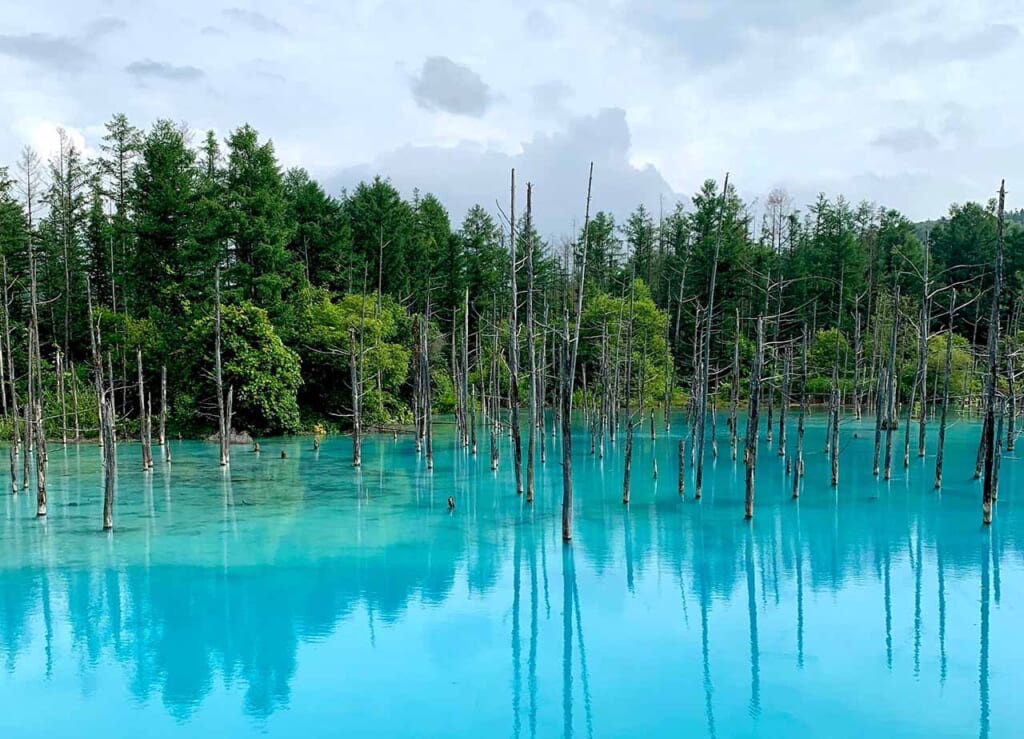
A short distance away, Lake Shikaribetsu (然別湖) is a freshwater lake, the only natural lake in the Daisetsuzan National Park. It is enclosed by volcanic mountains covered with primal forests, a scenery of untouched nature. Starting from a walkway of Shikaribetsu Kohan, I decide to hire a canoe. The small boat slides on the lake, while the only sound I can hear is the water moved by the paddles. I listen to this realm of silence unaltered since millennia.
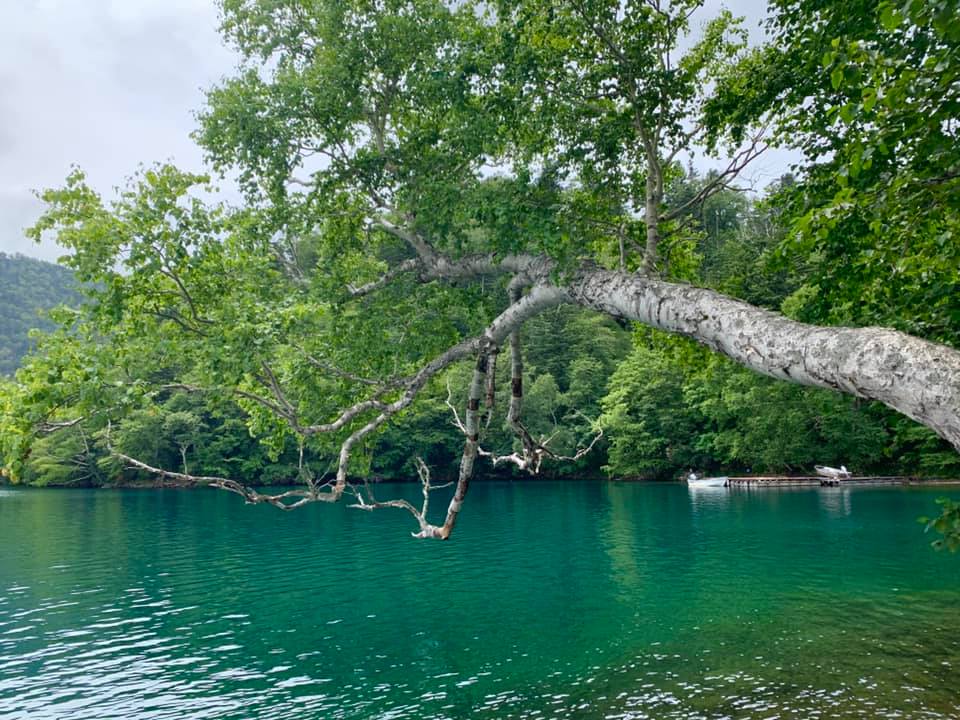
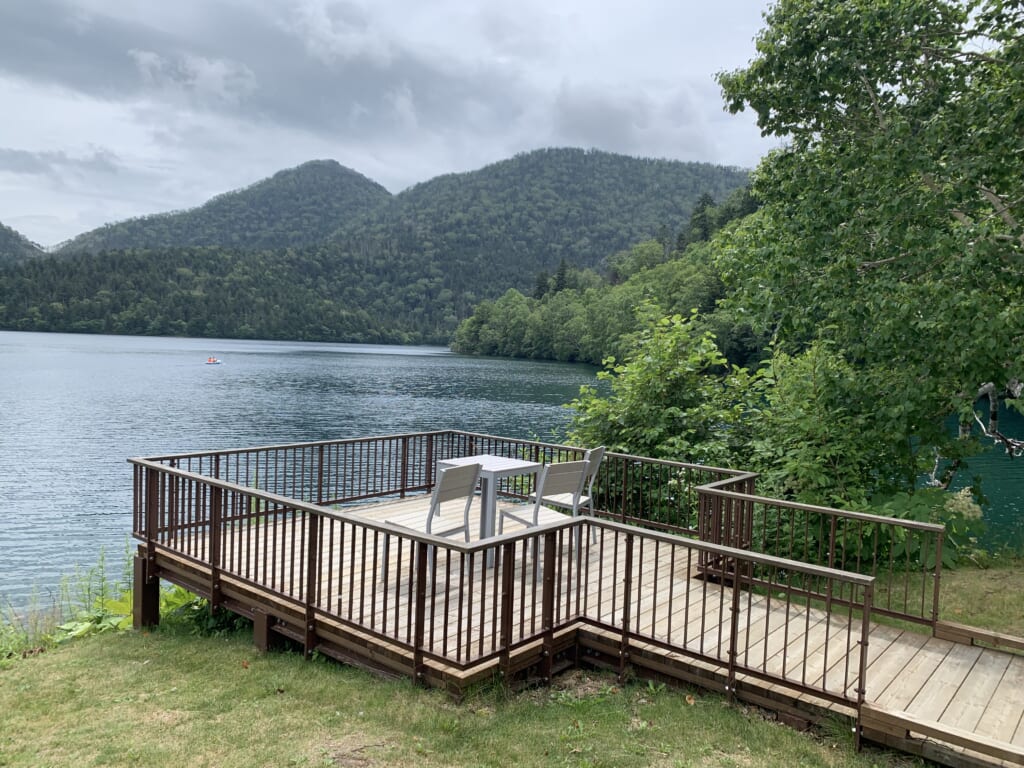
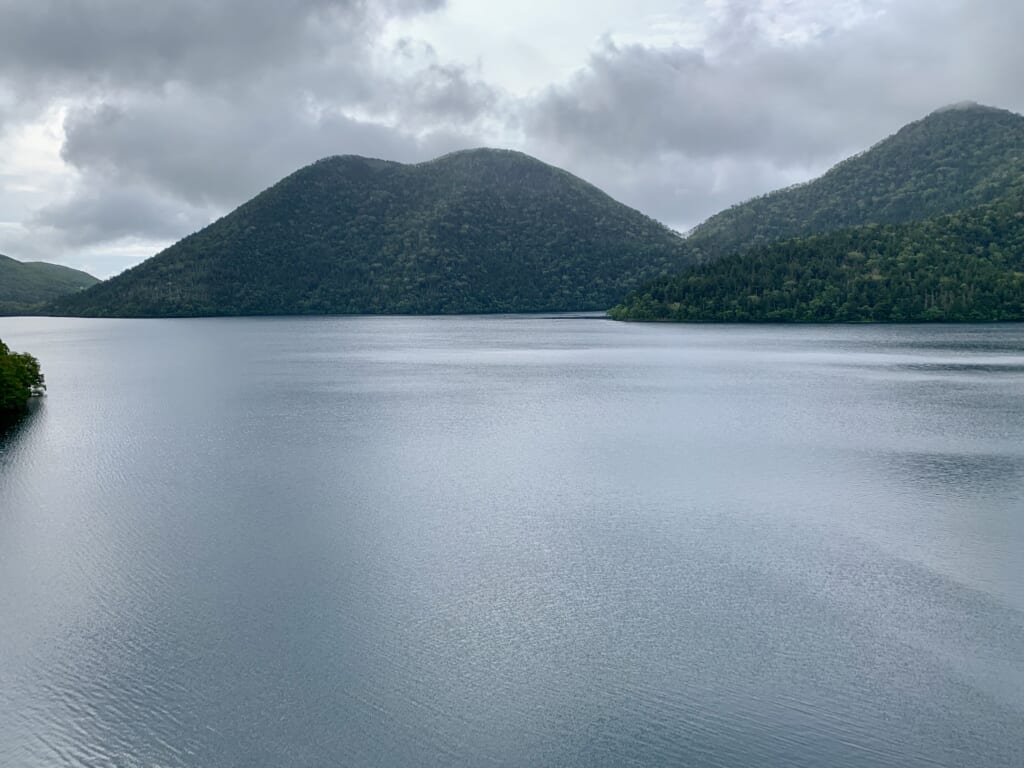
 Aoi Pond
Aoi Pond
ESTABLISHMENT NATURAL_FEATURE- Aoi Pond, Shirogane, Biei, Kamikawa District, Hokkaido 071-0235, Japan
- ★★★★☆
2. Akan National Park, caldera lakes in the shade of Mount Meakan
In the East of Hokkaido, Mount Meakan (雌阿寒岳, Meakan-dake) dominates a landscape of forests that give onto caldera lakes. The Akan National Park (阿寒湖, Akan-ko) is a boundless land of hiking and biking, in the mountains or on the lake shores.
Among them, in the middle of the Park, the Lake Akan extends peaceful waters. They contain the marimo (まりも), a ball-shaped green algae with a velvety appearance, native to Lake Akan. Even if I kept an eye open from the bank, I couldn’t see the algae for real, but I could look at them in jars on the shelves of shops.
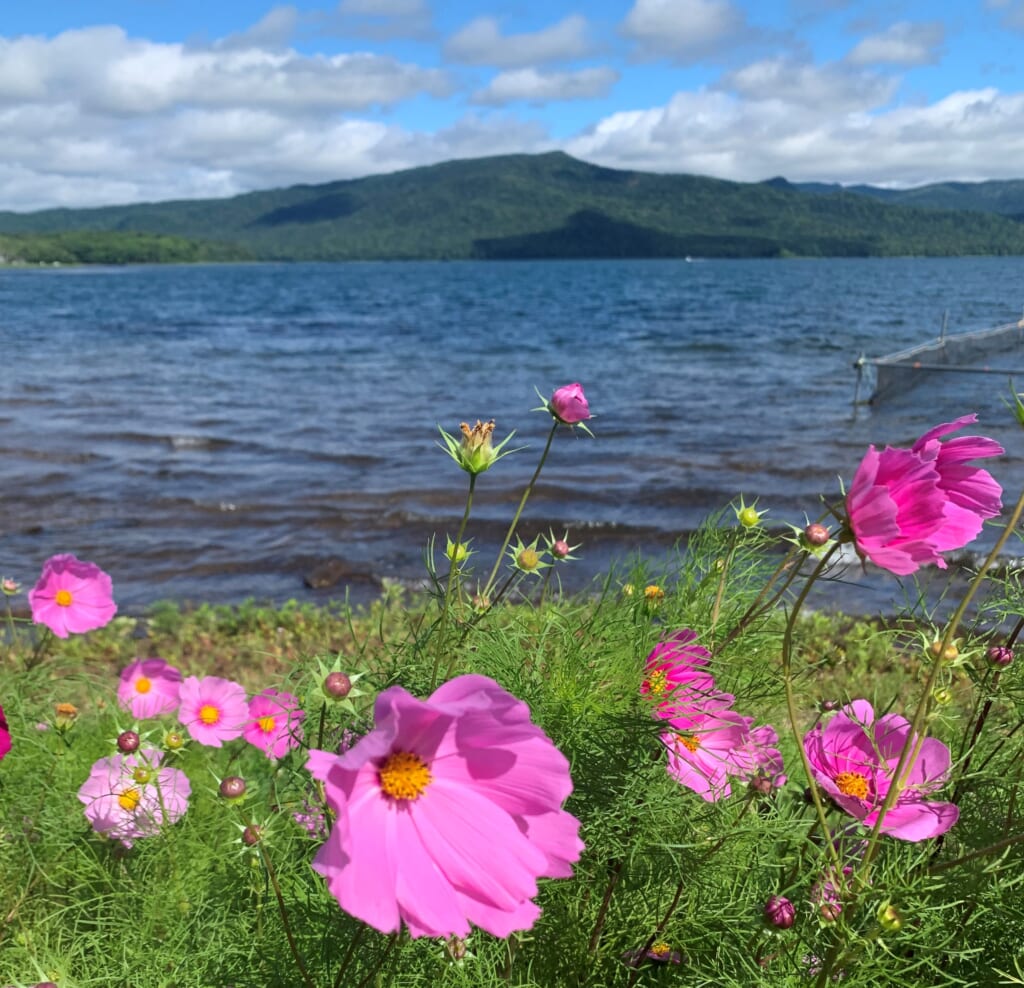
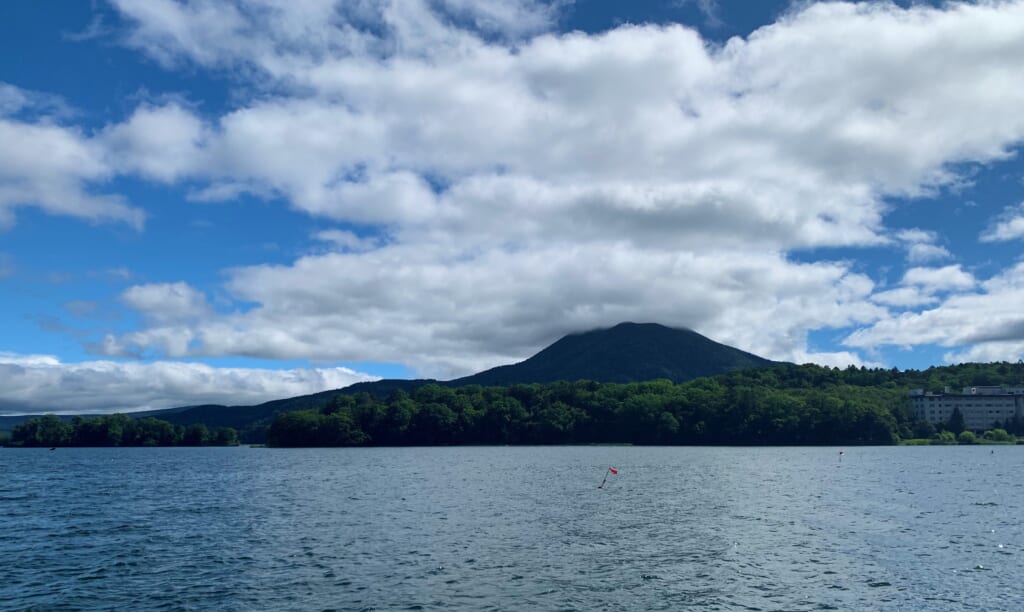
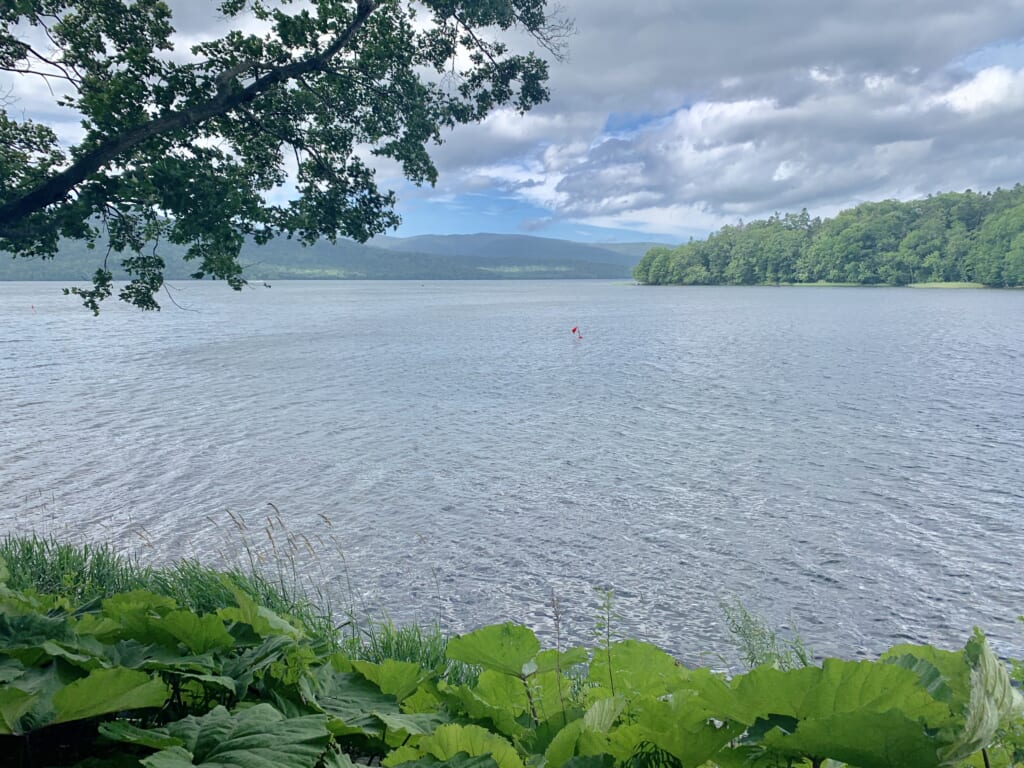
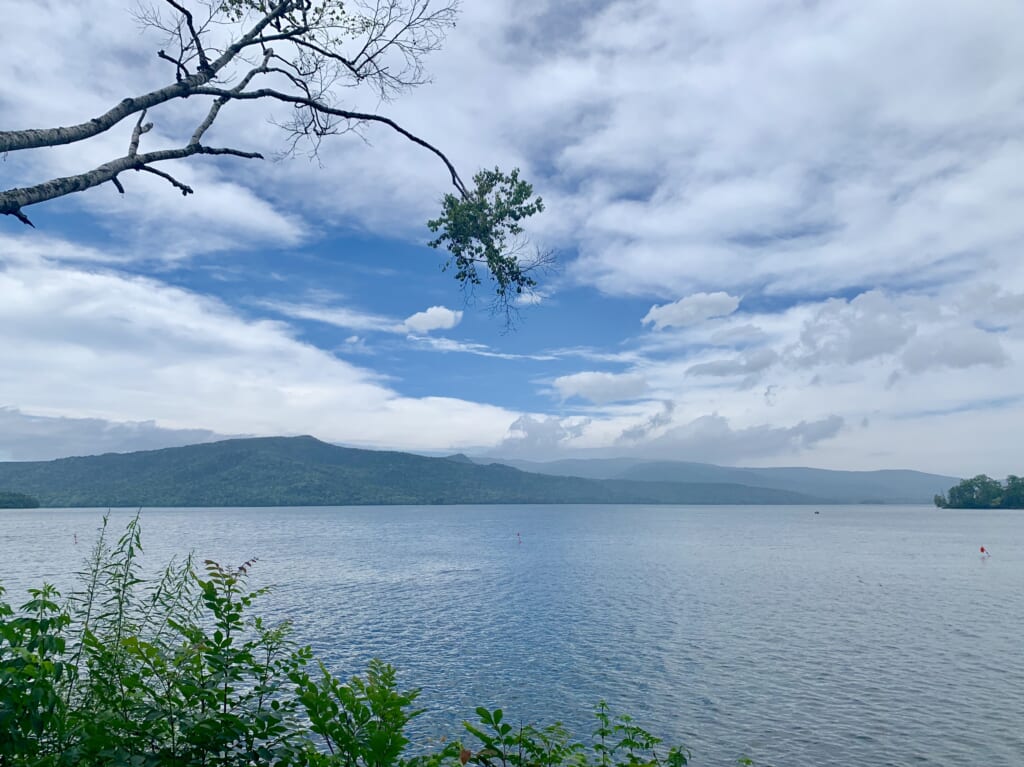
Lake Akan and Home to Hokkaido’s Ainu
Lake Akan is situated on the Ainus’ ancestral lands. The Ainus are the indigenous people of Hokkaido. This is a great opportunity to discover a little-known culture. Native from Siberia, these aboriginal people of hunters and fishers have been oppressed for a long time, victims of discrimination, and cultural integration policies. Ainus have followed a long path towards recognition.
On the banks of Lake Akan, Akanko Onsen (阿寒湖温泉) is a good base for exploring the region. This spa resort is home to a kotan (コタン), a traditional Ainu village which is also one of the biggest Ainu settlement.
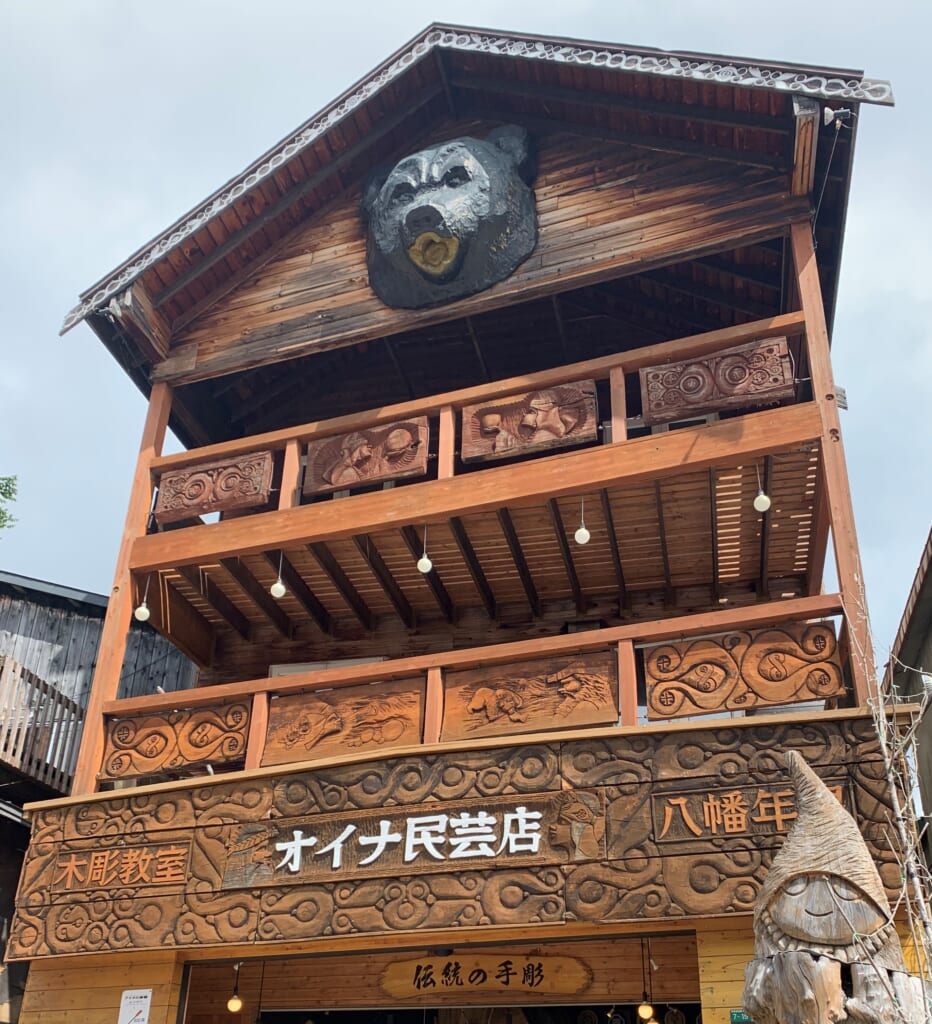
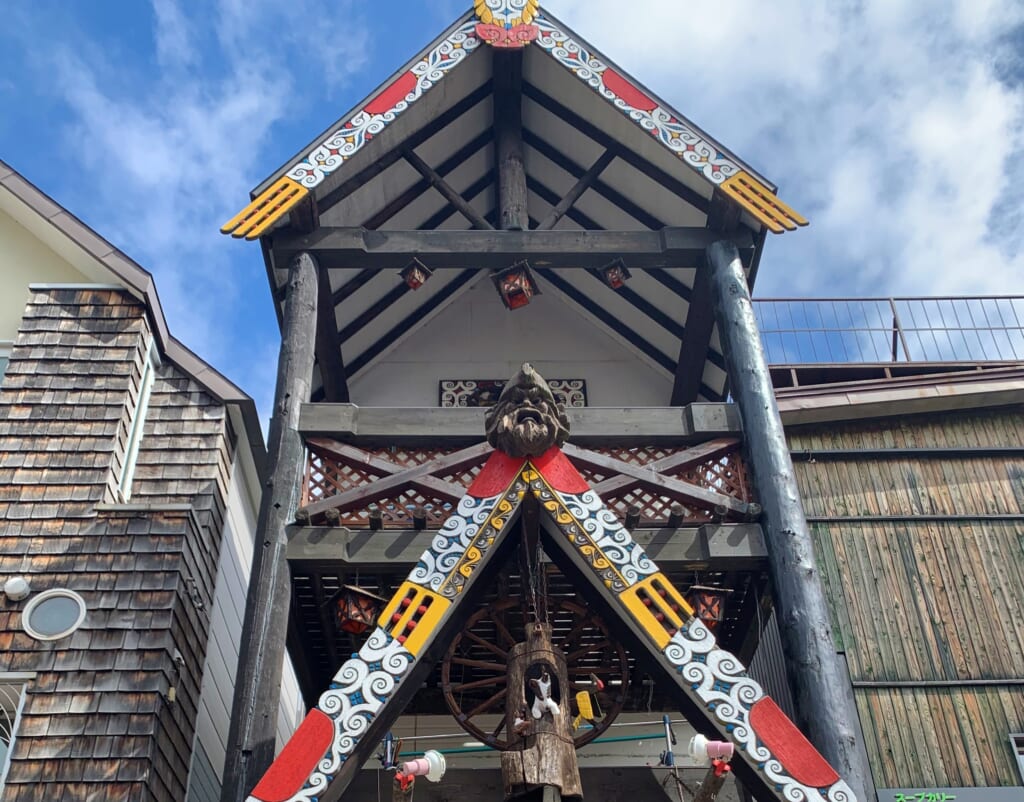
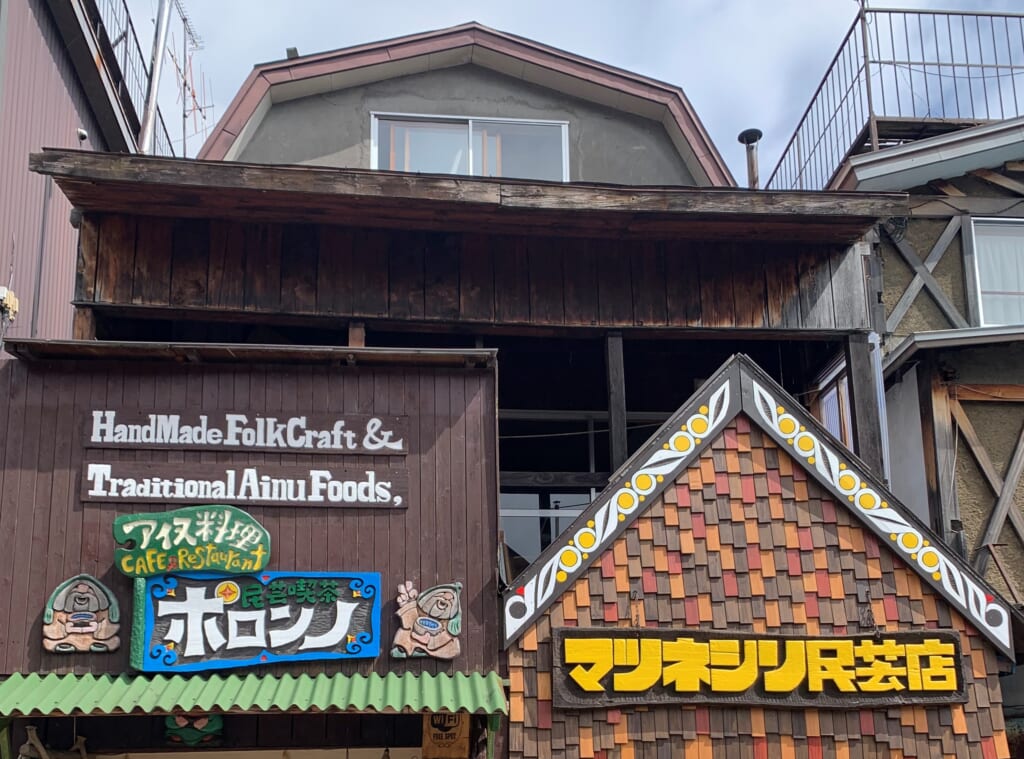
In a few streets, the shops overflow with wooden objects and sculptures of good quality. With their ancestral values, woodcarvers celebrate nature and animals. These Northern people’s cultural identity touched me, their beliefs and their craft skills passed down from generation to generation by oral tradition.
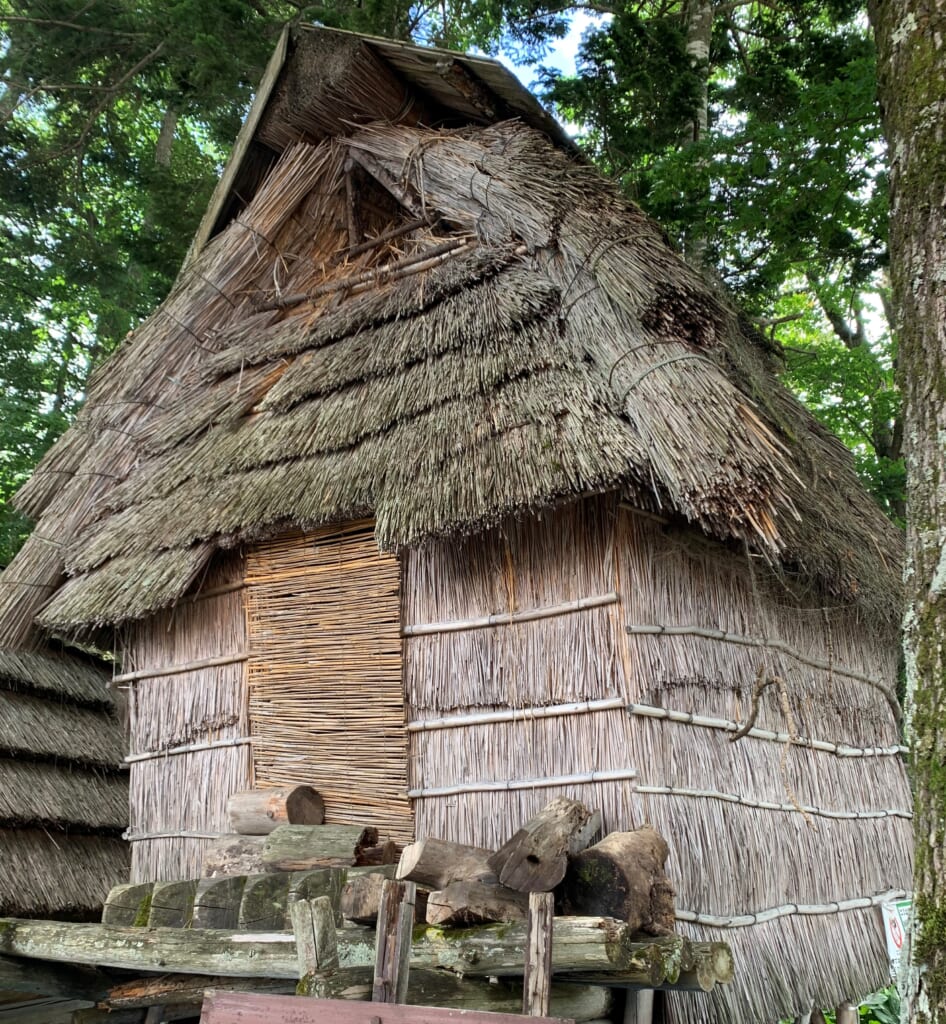
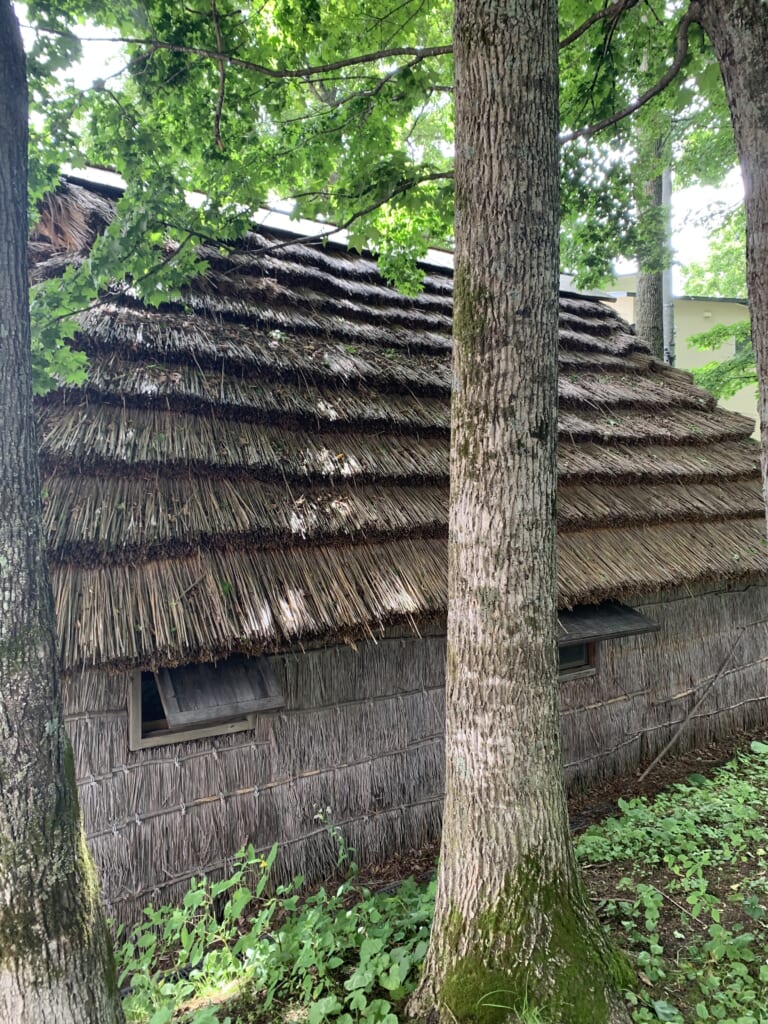
After a “swan” pedal boat ride on the lake, I boarded on a sightseeing boat for a night cruise. Onboard, each passenger writes a wish on a paper before placing it in a light ball. Then all the balls are thrown overboard —the boat glides between the luminous points floating on the black waters’ surface. I am lulled by this moment full of poetry. After the cruise, an Ainu ceremony is held on the banks. Then we walk in procession to the kotan, in the light of torches, while the Ainus sing traditional songs in deep voices. This evening has allowed me to live a full-size dream and has put stars in my eyes.
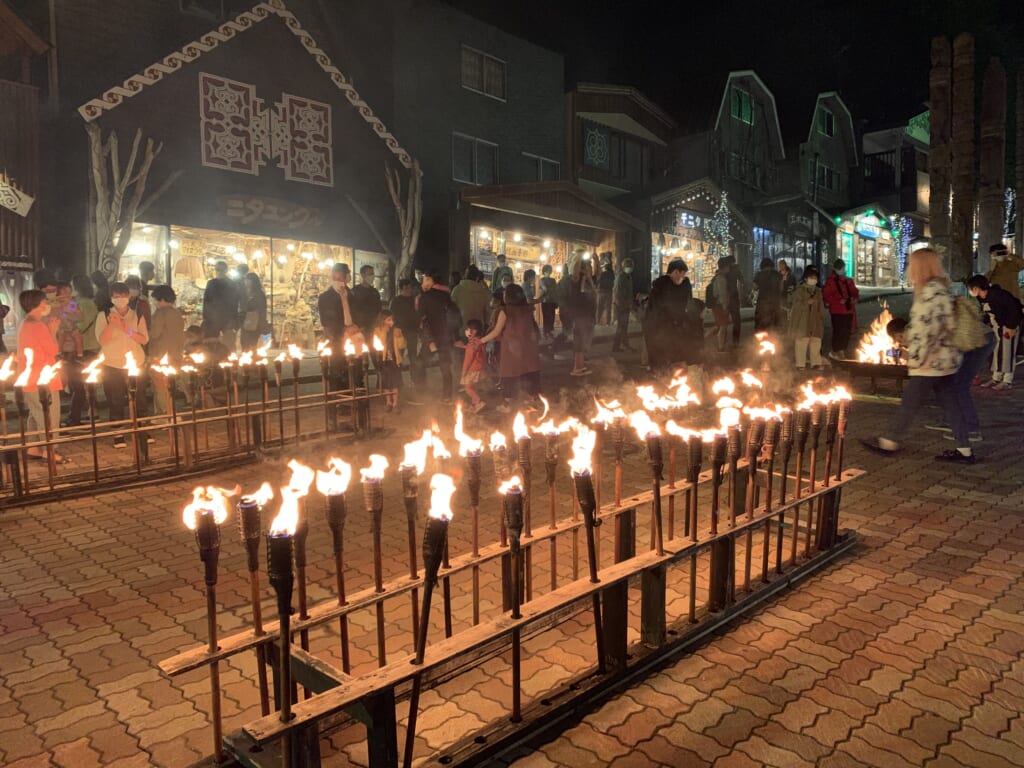
Bubbling Mud Volcanos of Lake Akan
The following day, from the Akankohan Eco-Museum centre (阿寒湖畔), I join a discovery path that runs along the lake banks. I arrived at the bokke (ボッケ), a fascinating natural phenomenon: these are mud volcanos with bubbling pools. As the bokke bubble at a temperature of more than 100 degrees Celsius (212 degrees Fahrenheit) in an astonishing and noisy boil, the ground rumbles. A delight for the eyes, this journey in Hokkaido never ceases to amaze me.
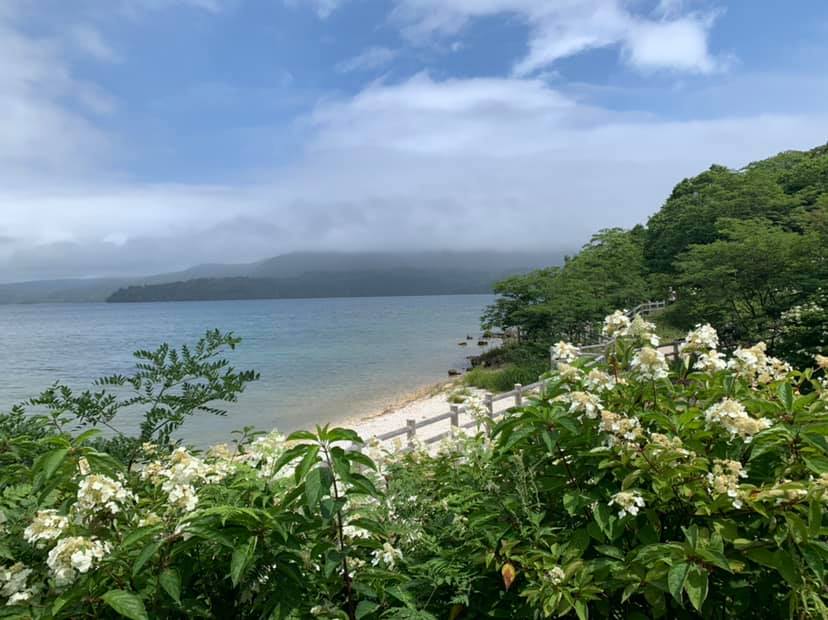
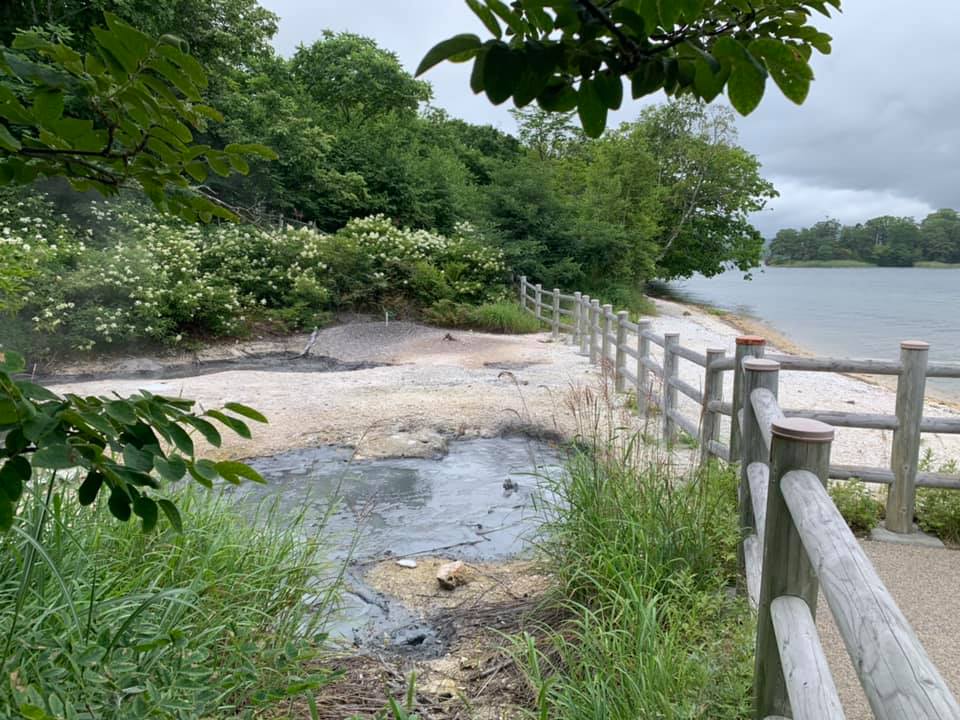
The trail continues under a forest of Mizunara oak trees (ミズナラ), Katsura trees (カツラ) and Sakhaline pines (エゾマツ, Ezo matsu), through curves and flights of staircases. The forest is home to brown bears and Sika deers. Nets have been installed on some trunks to prevent bark-stripping by deers.
Lake Mashū (摩周湖, Mashu-ko) is another caldera lake. The road serves several observation decks. The lake is famous for its waters, renowned for being among the purest and the clearest on earth.
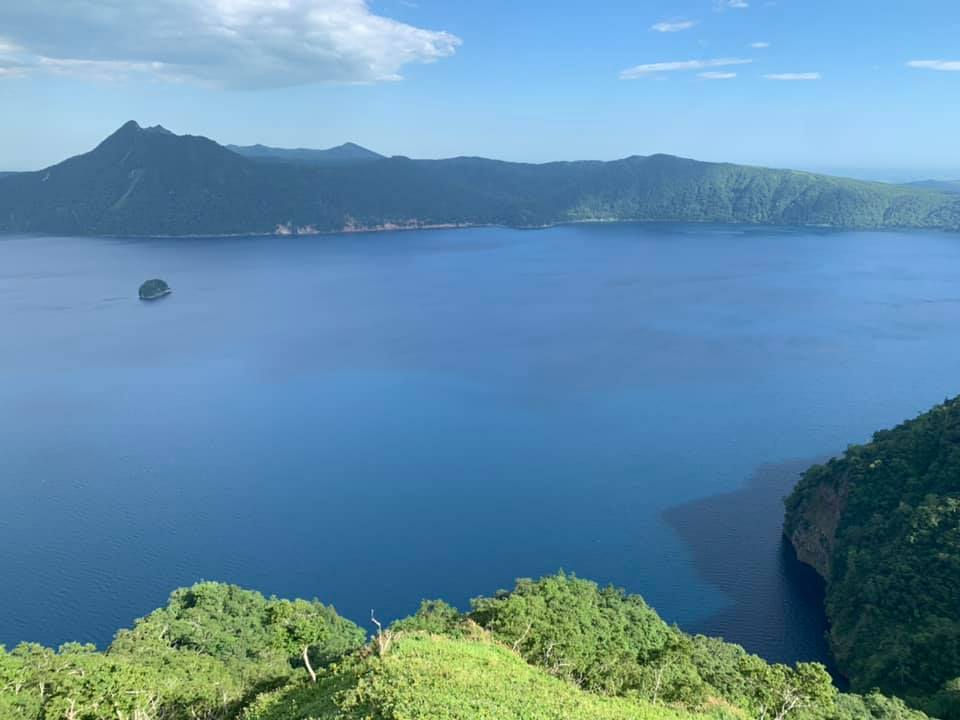
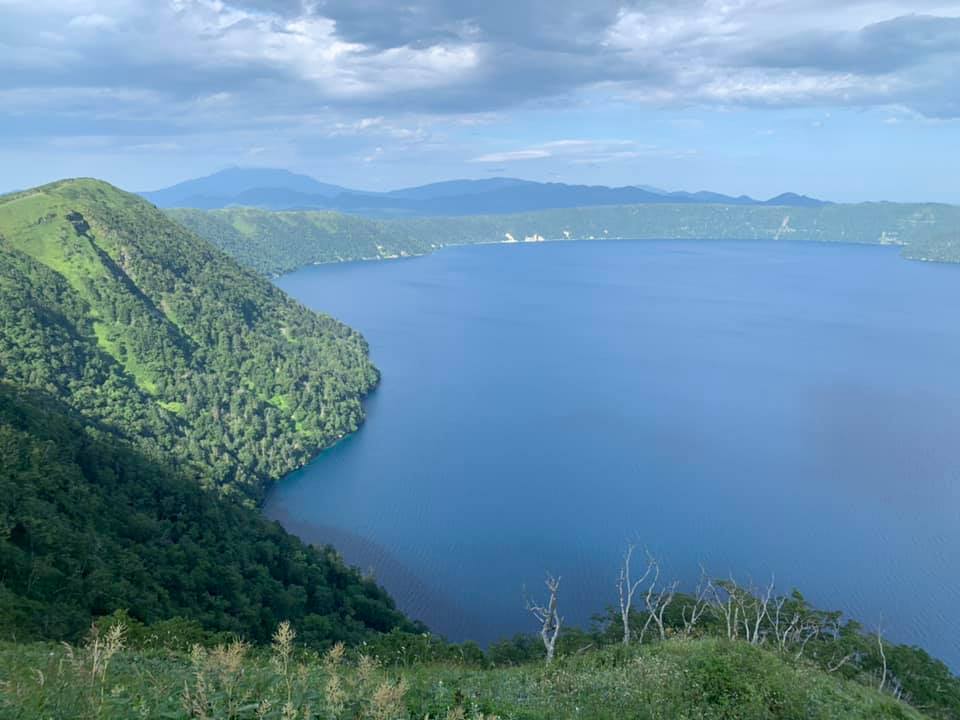
Lake Kussharo and Nakajima Island
Its neighbour, Lake Kussharo (屈斜路湖, Kussharo-ko), has as a distinctive feature: Nakajima Island (中島). In the middle of the lake, this is a stratovolcano whose gas acidify the water. According to the legend, Kusshii (クッシー), the local Loch Ness Monster, lives on this desert island. I try to imagine the winter landscape, the fighting between the heat and the cold, while the hot spring prevents the lake from freezing completely.
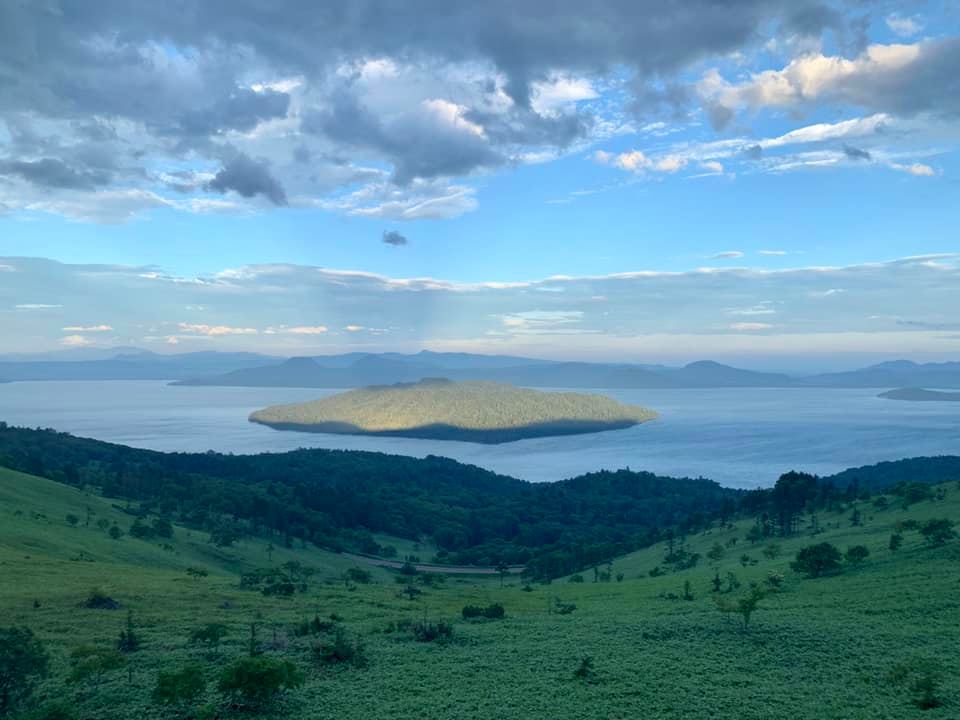
As for the weather, unpredictable skies constantly change. Clouds and mist regularly surround volcanos, before the sun’s mild rays caress them.
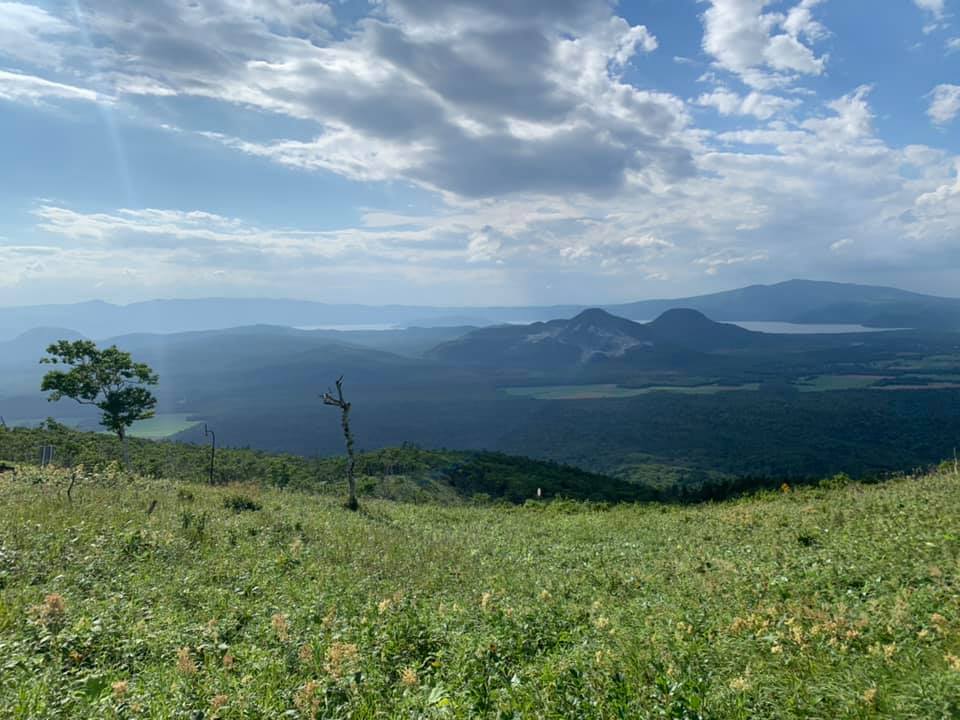
Now it is time to explore the volcanoes. As a serious backpacker, I purchased a bell from the Ainus craftsmen. This accessory is strongly recommended to warn bears of our presence and to keep them away.
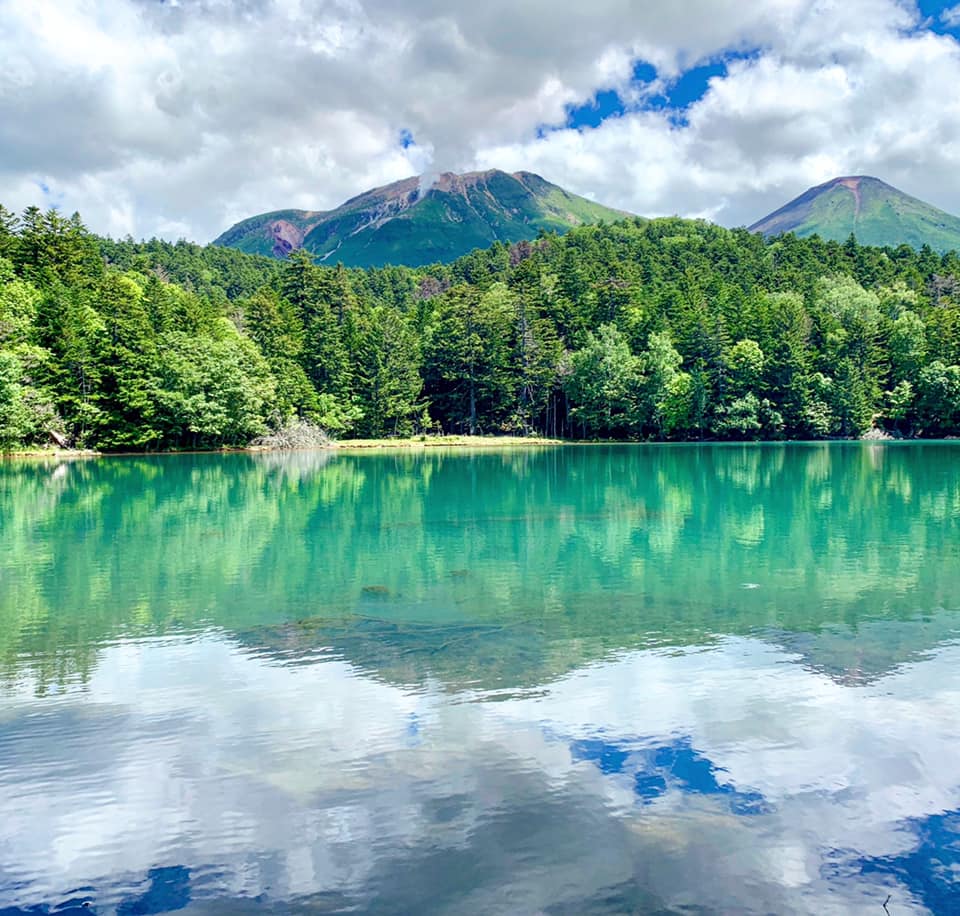
I started nice and easy down the Mount Meakan, on the banks of Lake Onnetō (オンネトー). The lake is surrounded by resinous forests, in a setting worthy of Northern Canada.
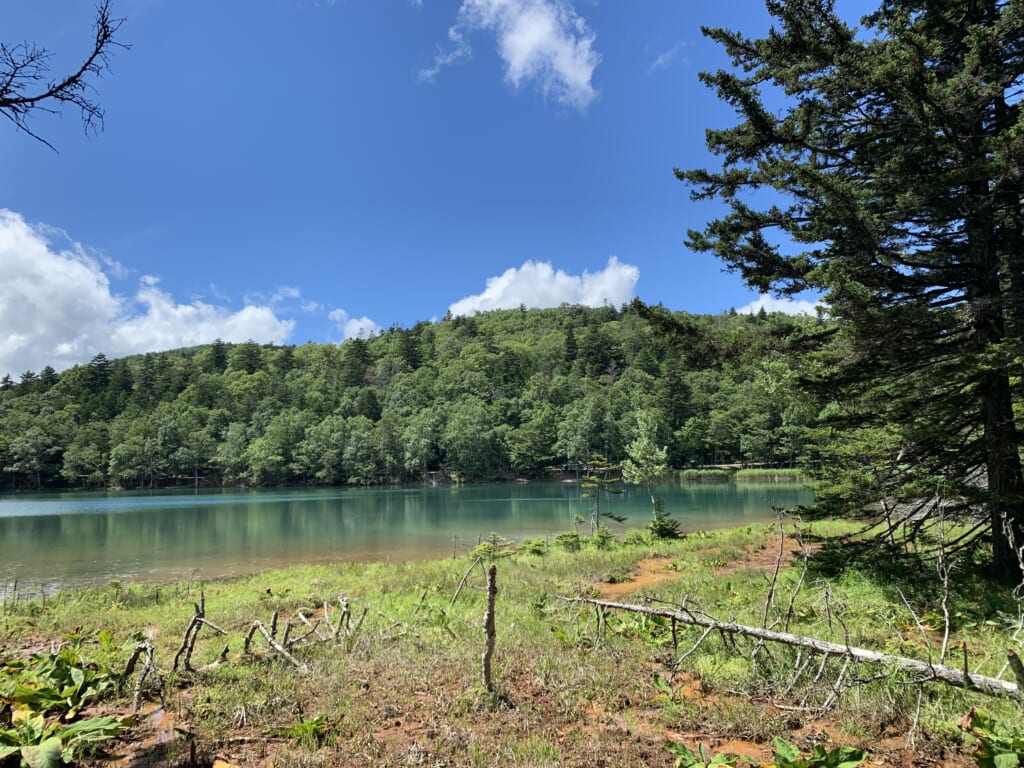
For a more active volcanic show, let’s go to the Mount Iō (硫黄山, Iō-san). Hot steams escape from fumaroles and yellow sulphur-spewing vents. Watch out for your feet! Here and there, water bubbles in small natural pools.
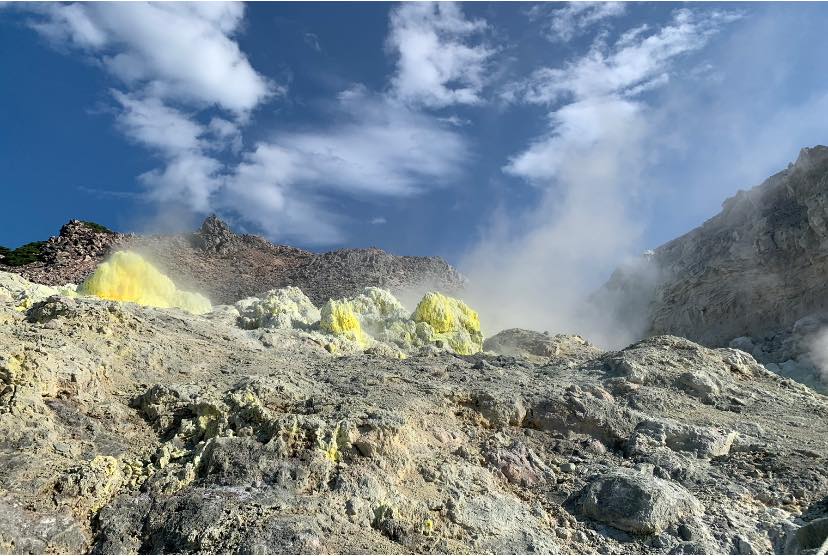
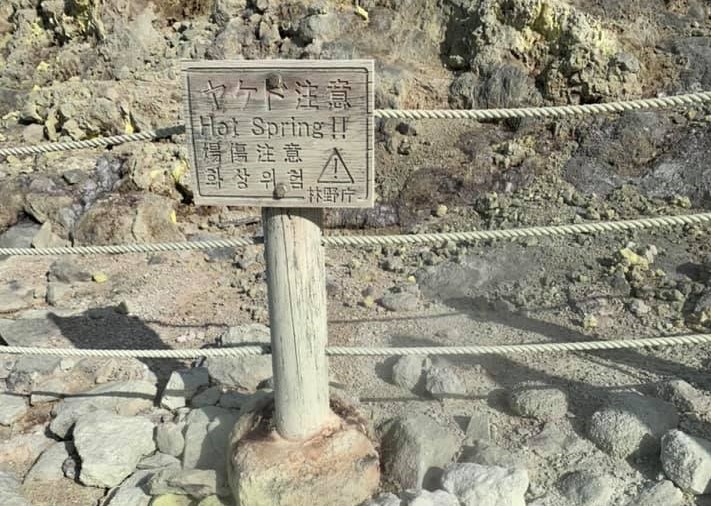
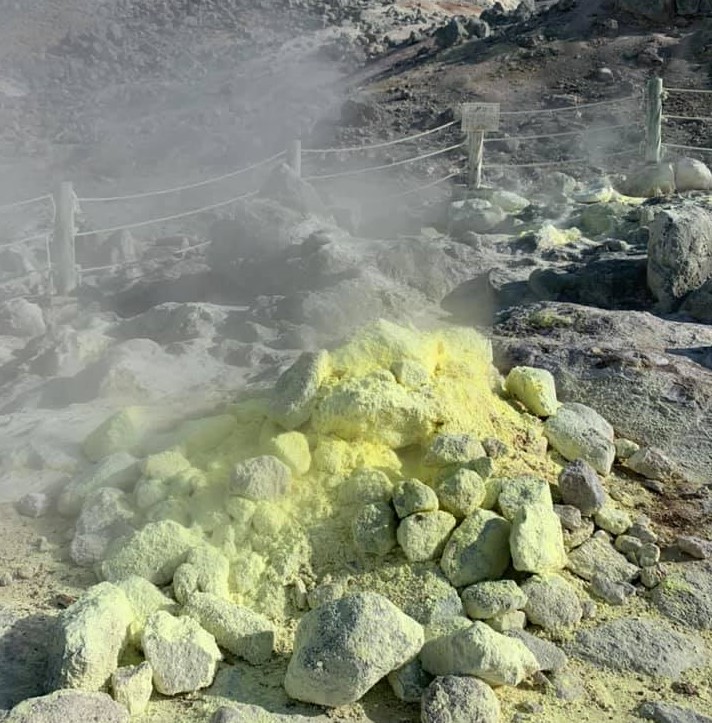
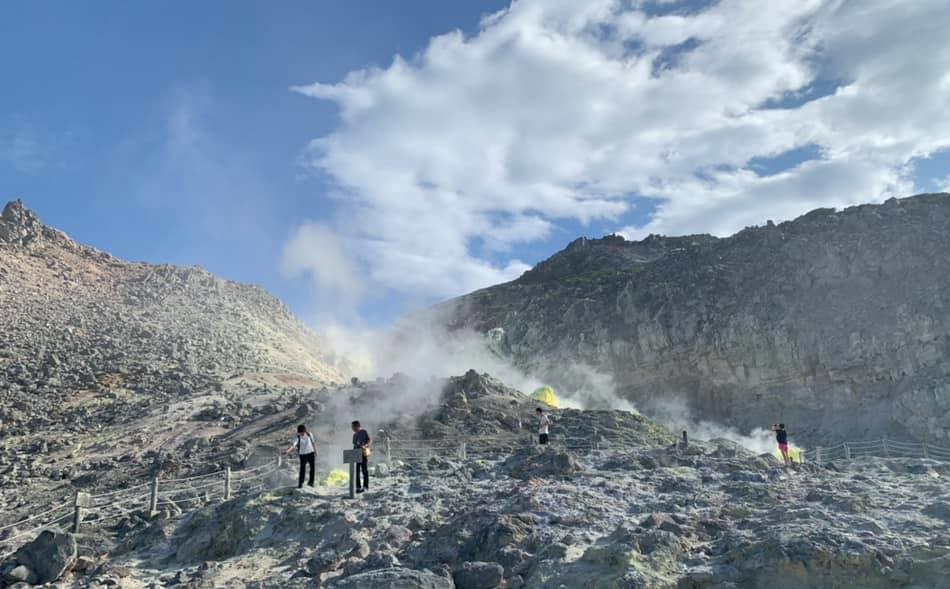
Mount Meakan
But the high point of Akan National Park — the high point of my journey — is Mount Meakan, an active stratovolcano. The climb in a day trip is remembered as an unforgettable crossing of different ecosystems. The hiking begins in a coniferous forest, to a sulphurous field. Clouds come and go and renew the landscape rapidly. Vegetation runs out gradually until I reach magmatic rocks fields. I leave the forest behind me.
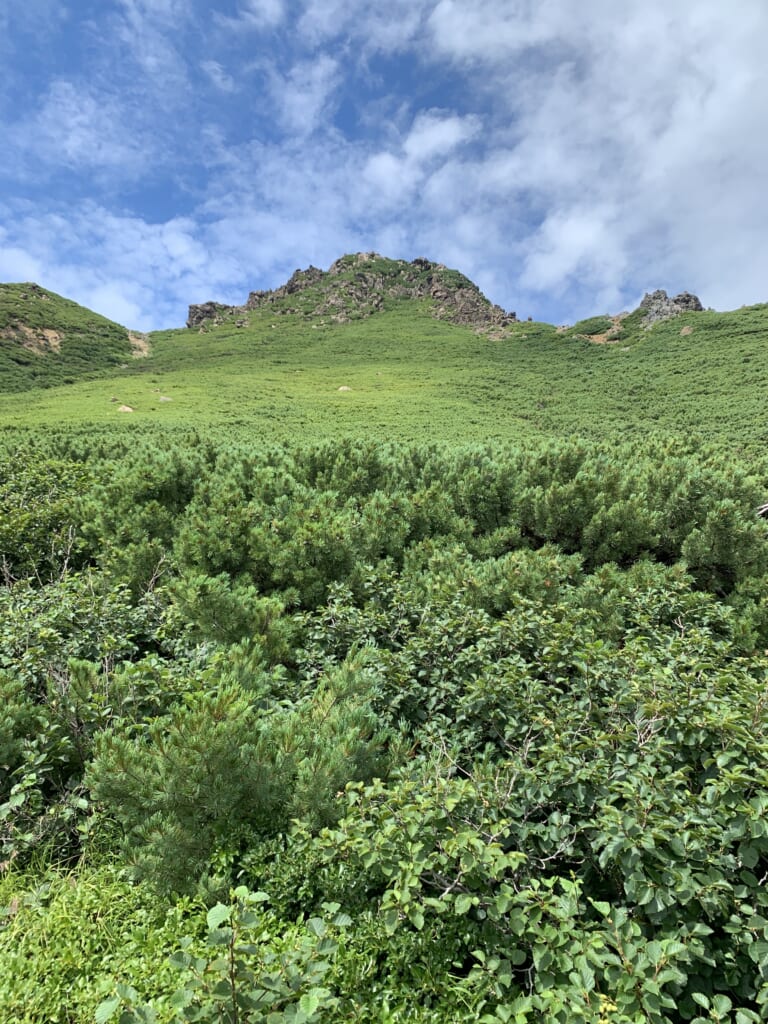
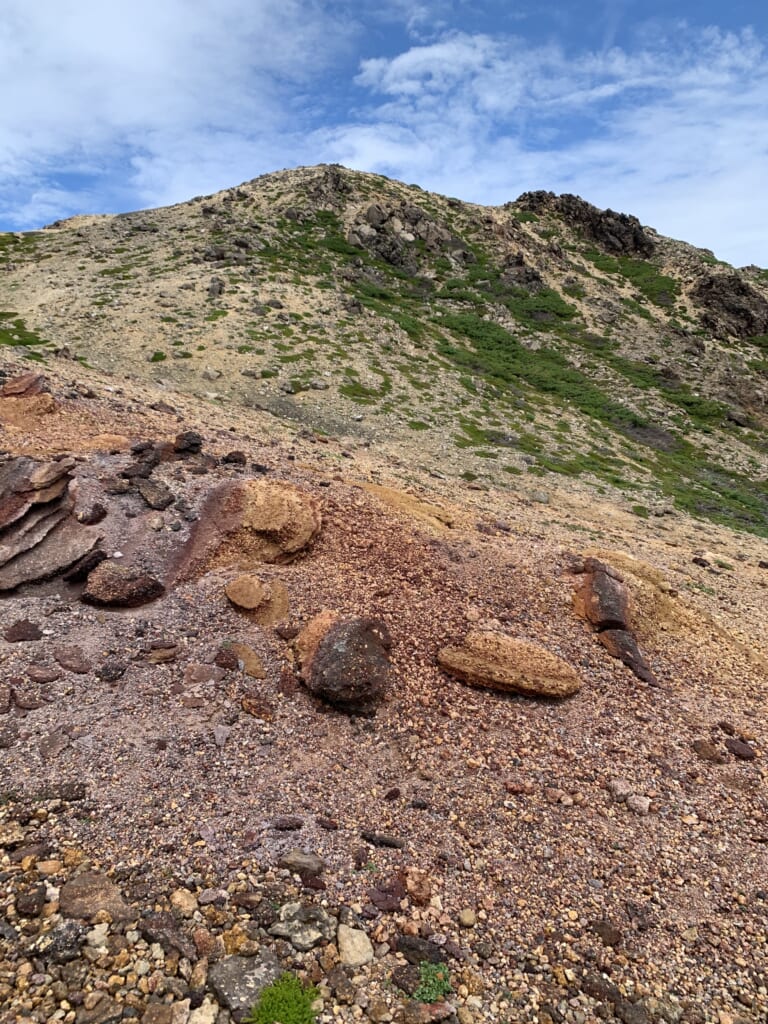
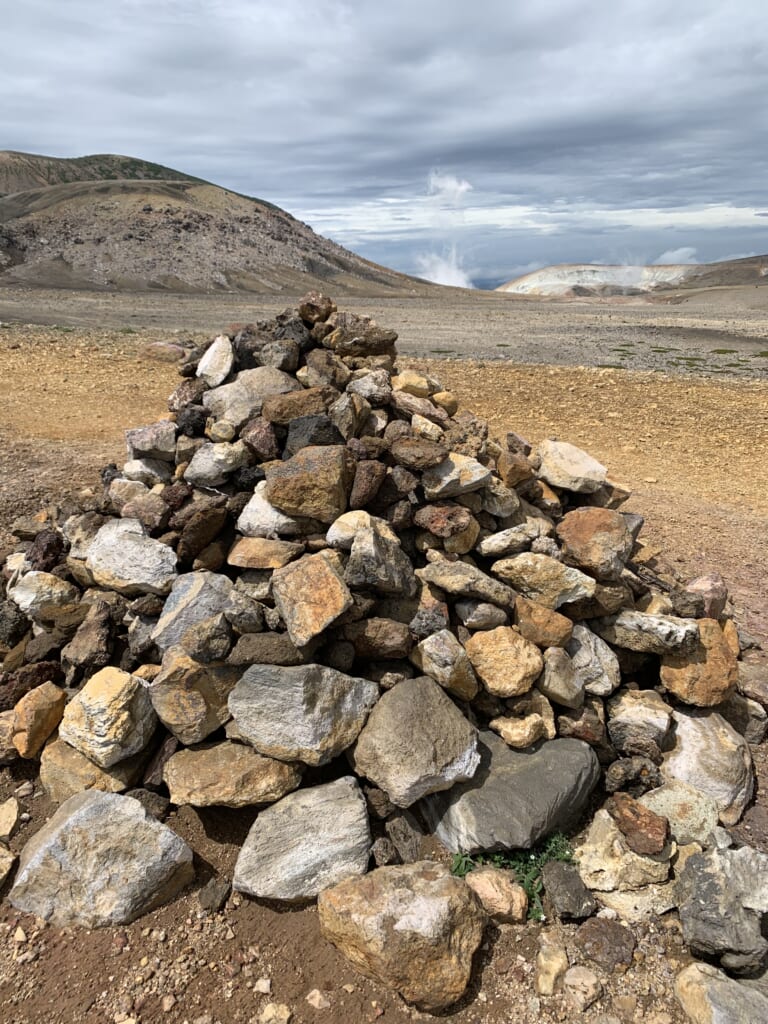
In a desolate volcanic landscape, nearby fumaroles, I drop off a stone at the top of each cairn. On the last kilometers of climbing, we walk on a ridge. Once at the peak (1,499 m), this is like the roof of the world, overlooking lakes, mountains, and clouds. The wind blows over my ears, and the crater smokes and rumbles. This deafening stage is soon shrouded in a fog that will not dissipate my amazement.
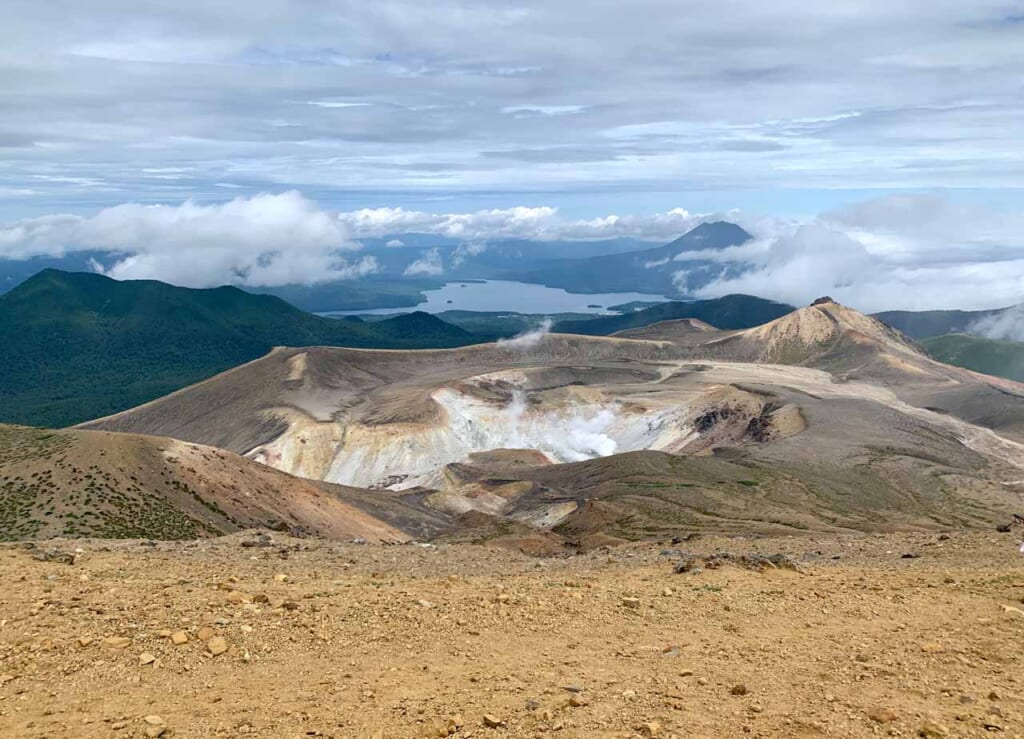
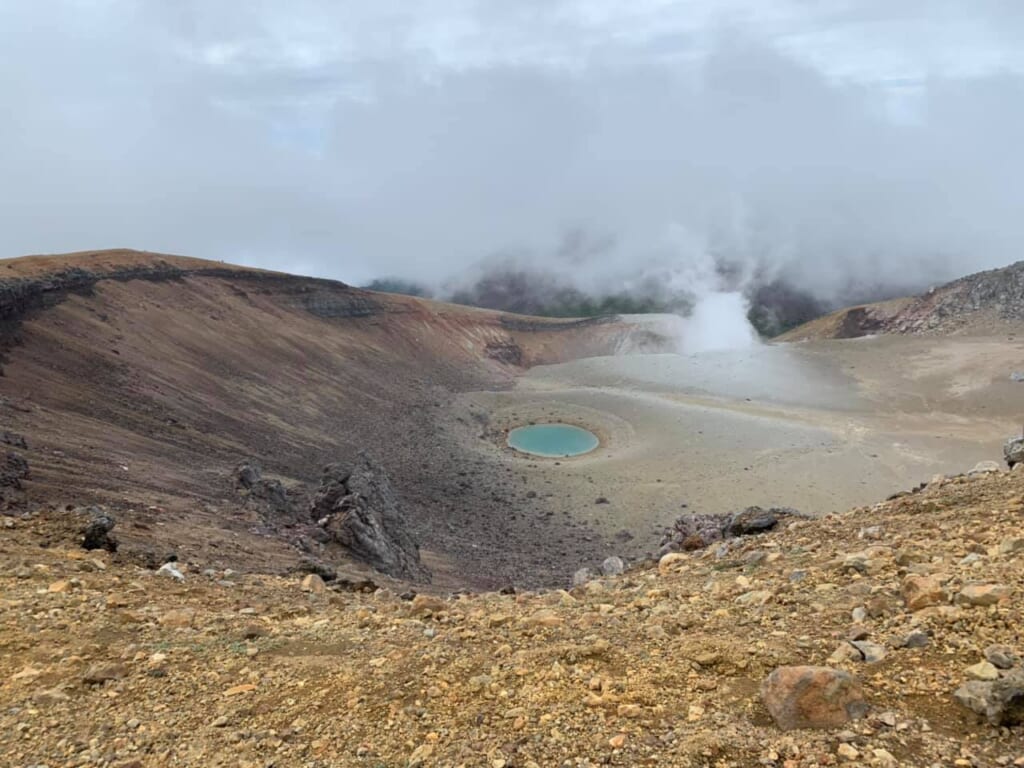
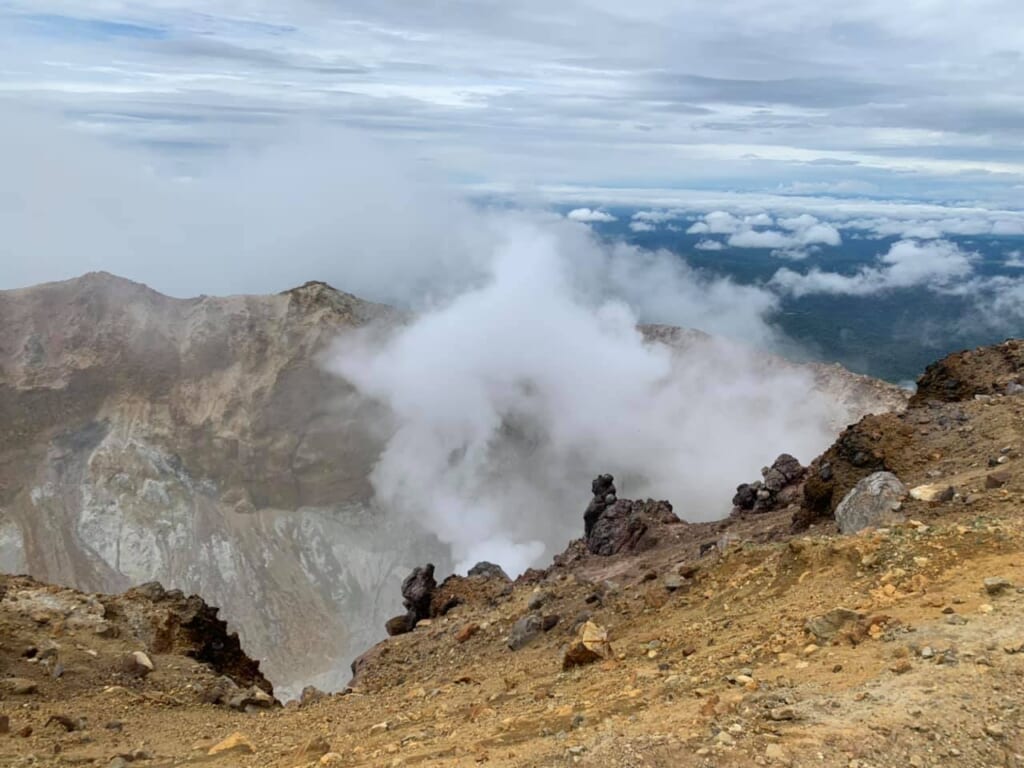
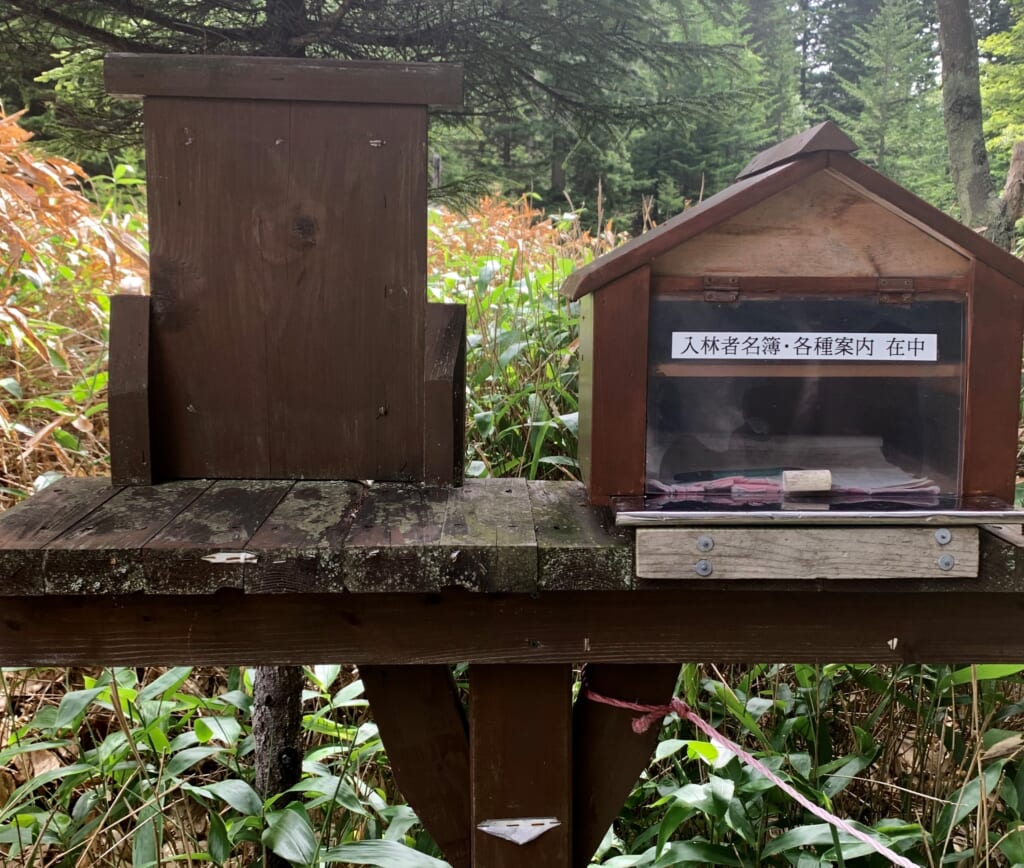
box to state departure and return time
3. Kushiro Shitsugen National Parks, the largest wetlands in Japan
The Kushiro Shitsugen National Park (釧路湿原国立公園) is renowned for its swamps, the largest wetlands in Japan. The Kusshiro River serves a network of marshes and ponds surrounded by plateaus. I am struck by the silence. Unfortunately, like everywhere, this ecosystem is threatened by drying up, agricultural expansion, forest exploitation, and urban development.
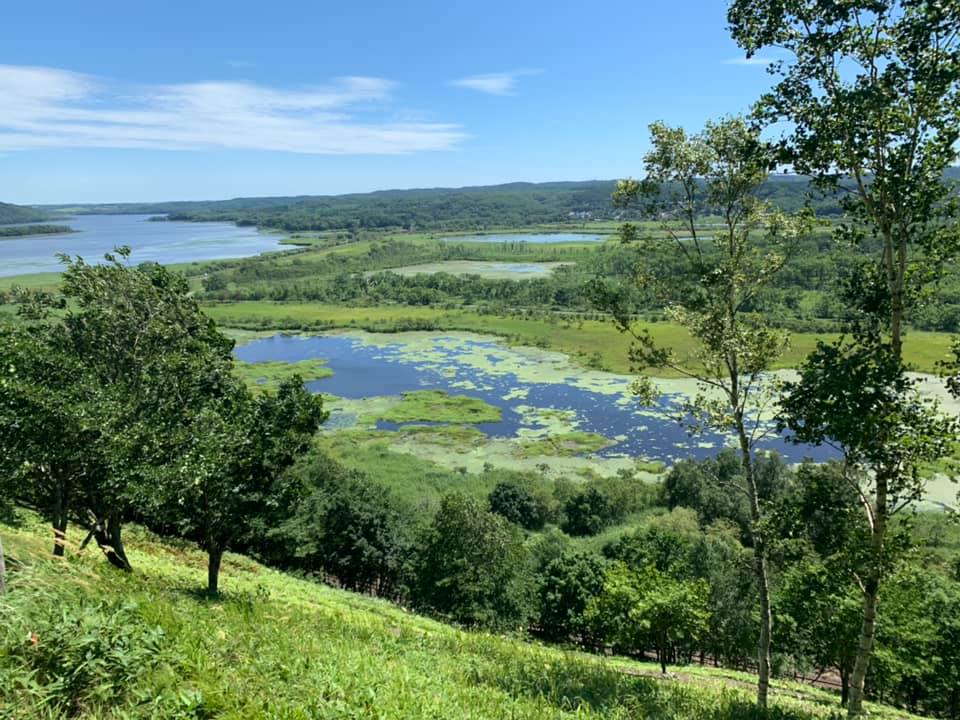
Swamps and peatlands are the sanctuaries of many species of birds. The celebrity of the park is the Japanese red-crowned-crane (tanchō, 丹頂), a symbol of longevity and prosperity. Ainus consider it as the kamui (spirit) of marshes. With a little bit of patience and a pair of binoculars, we glimpse the crane in the distance: it is hidden in the undergrowth, or more often, hovering on an islet in the middle of the swamp, slender among the reeds.
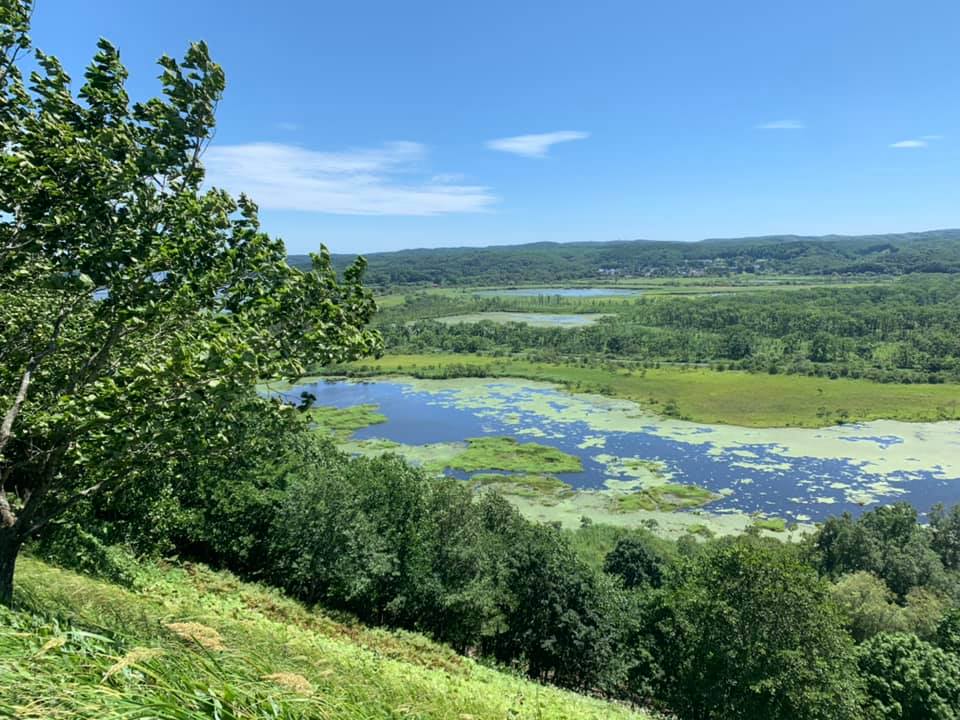
The ponds are also surrounded by alders, bulrush, cotton herb, and other water plants. In the summertime, they are dotted with Alpine flowers.
The Kushiro Shitsugen Norokko-go Train (ノロッコ号, running from April to September) is a scenic train. It runs through the region at low speed, giving passengers the opportunity to discover the marshland and the fauna.
4. Shiretoko Peninsula, a sanctuary of wildlife at the world’s end
On the edge of Hokkaido, the Shiretoko Peninsula (知床, Shiretoko-hantō, “end of the earth”) presents some of the wildest places in the Japanese archipelago. At the bottom of volcanic mountains, dominated by Mount Rausu, lakes and forests are home to thousands of wildlife species, especially brown bears. The shoreline is formed by cliffs and waterfalls diving into the sea.
The Five Lakes (知床五湖, Shiretoko Goko) are a must-see in the Park. Here, forests open their edges on crystalline lakes. Before we enter, we dust our shoes with a brush to avoid introducing seeds from other places in this endemic ecosystem.
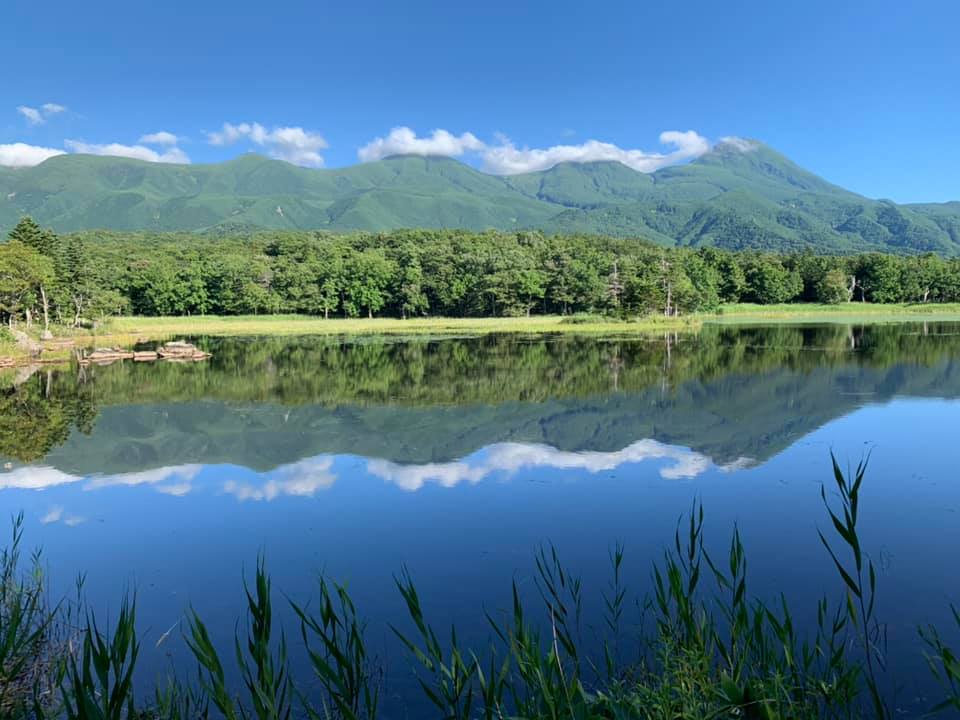
Then we set off on wooden walkways built up to protect the biotope. The path leads to crystalline lakes. They are veiled behind foliage as hidden treasures, and the volcanic mounts reflect in motionless waters.
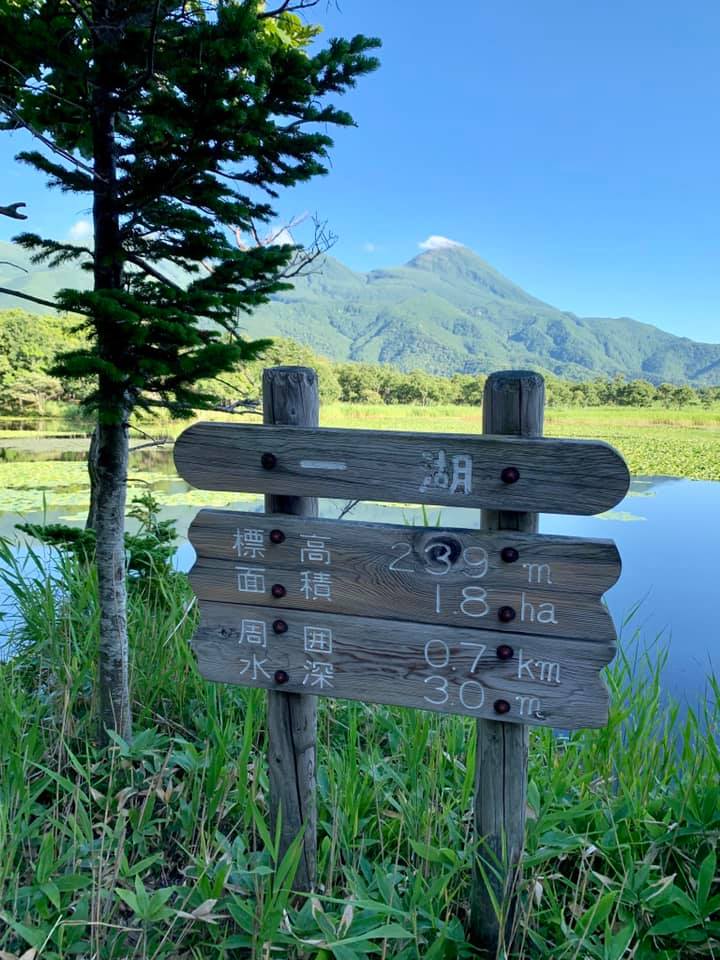
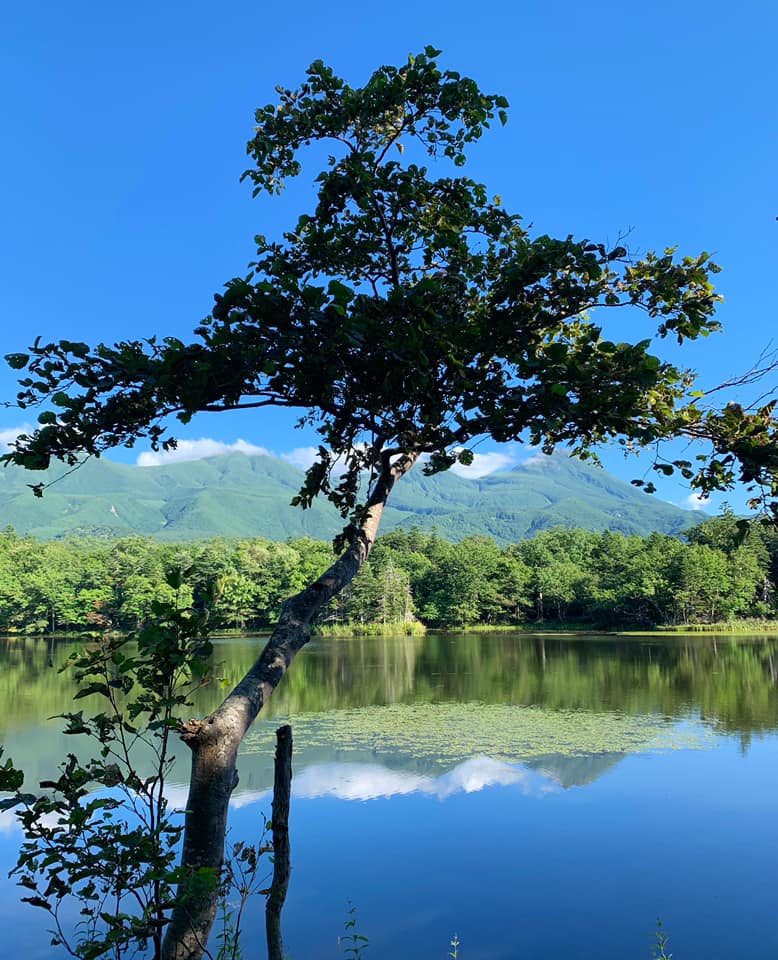
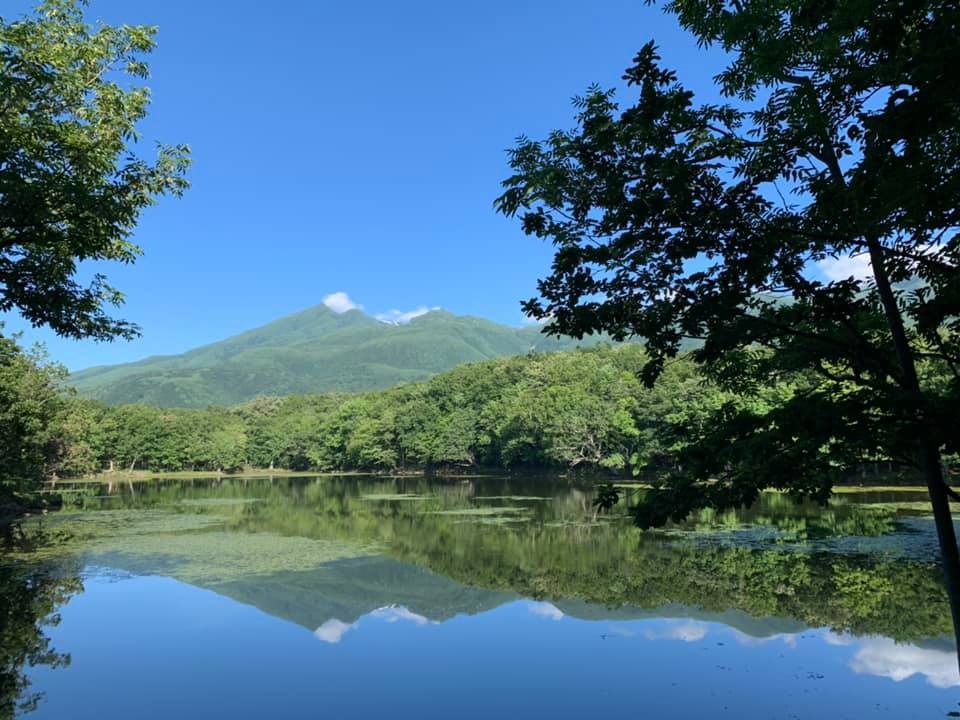
At the end of the trail, the vista from the walkways embraces swamps almost as far as the eye can see, as volcanos always outline the skyline.
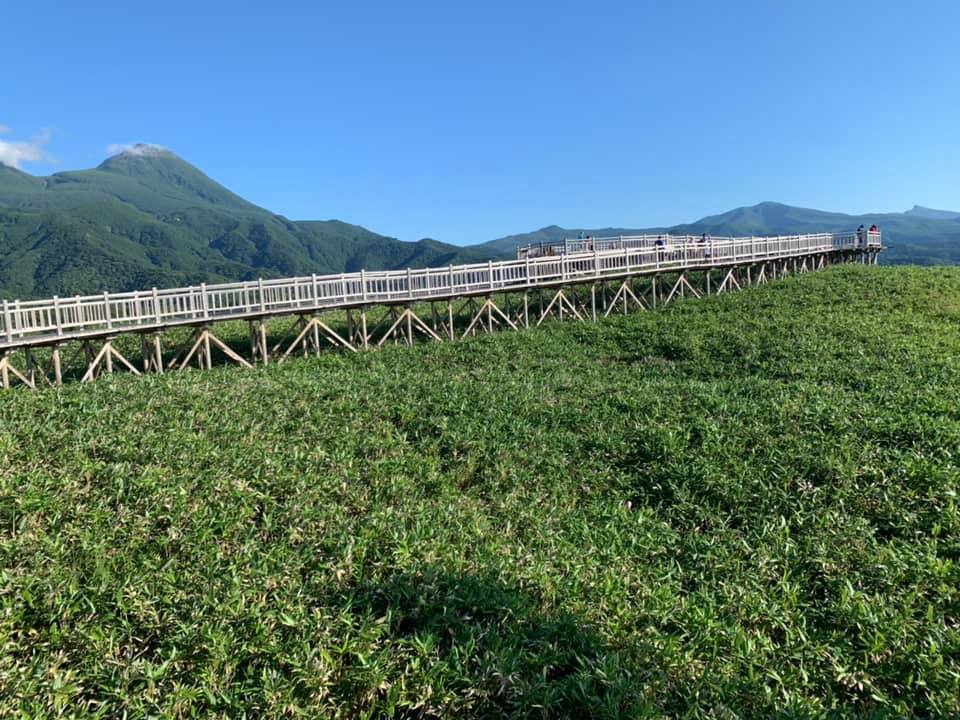
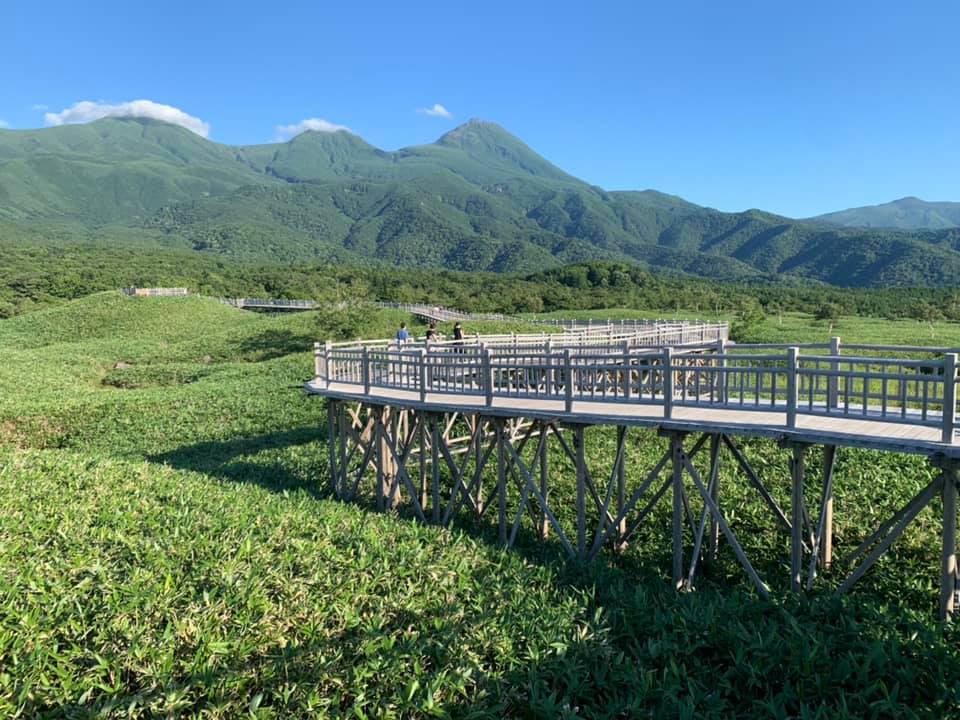
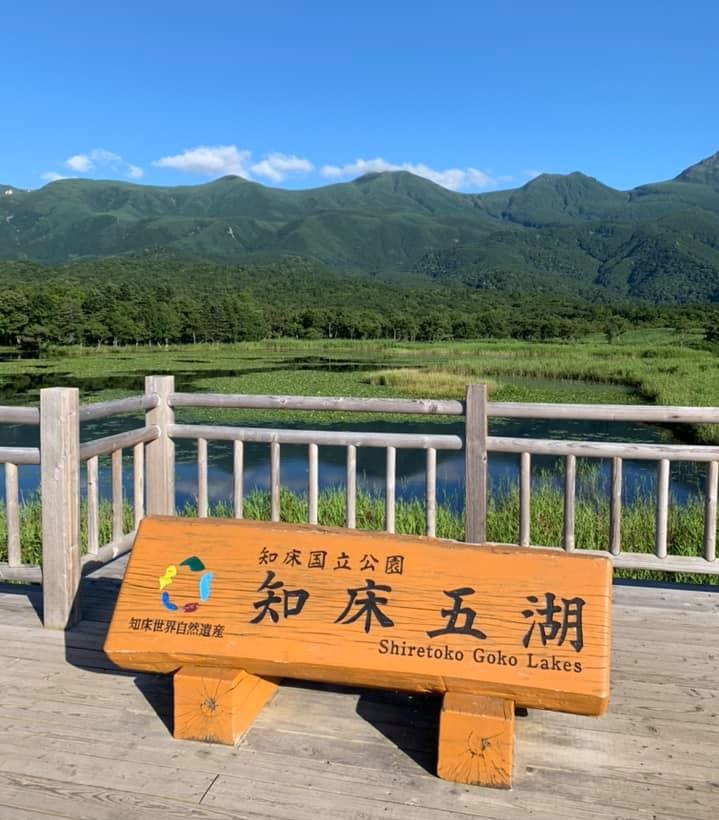
 Shiretokogo Lake
Shiretokogo Lake
ESTABLISHMENT NATURAL_FEATURE- Shiretokogo Lake, Onnebetsumura, Shari, Shari District, Hokkaido 099-4356, Japan
- ★★★★☆
Shiretoko is also famous for its countless hot springs. In Iwaobetsu Onsen, a succession of rotenburo have been set up in the heart of the forest. The sunbeam pass through the foliage. A trail goes back to the stream of the river that feeds the rotenburo, to a waterfall. Take care— some pools are boiling, so as it is difficult to get in the water! Within walking distance, I push through the door of ryokan Chinohate, whose outdoor onsen is a lovely surprise. I bathe under the sun, between pine trees and dragonflies. This is a slice of heaven!
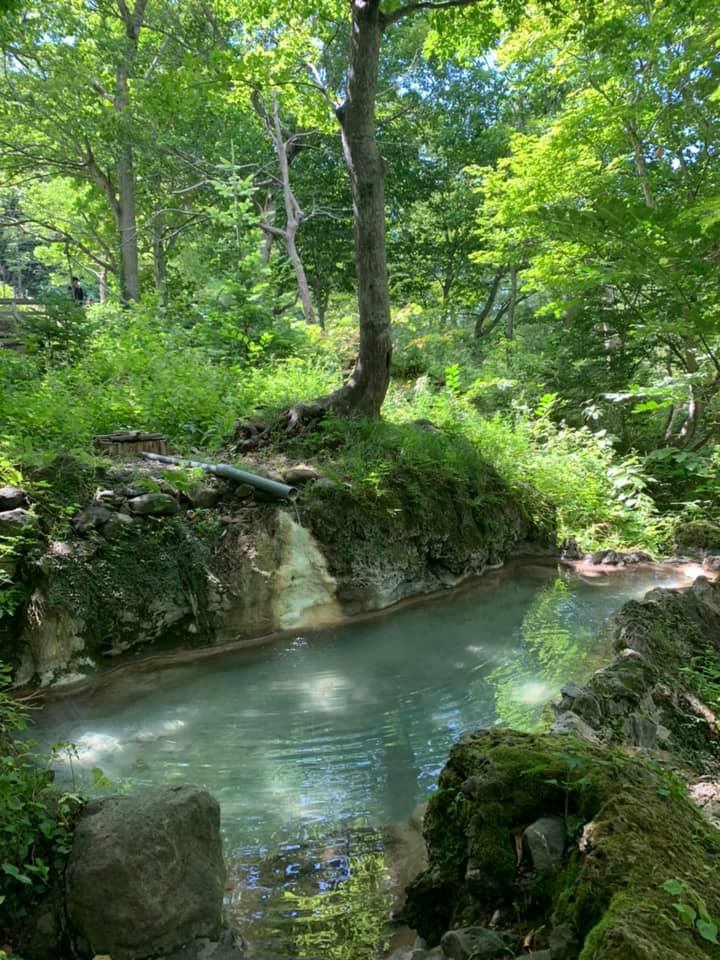
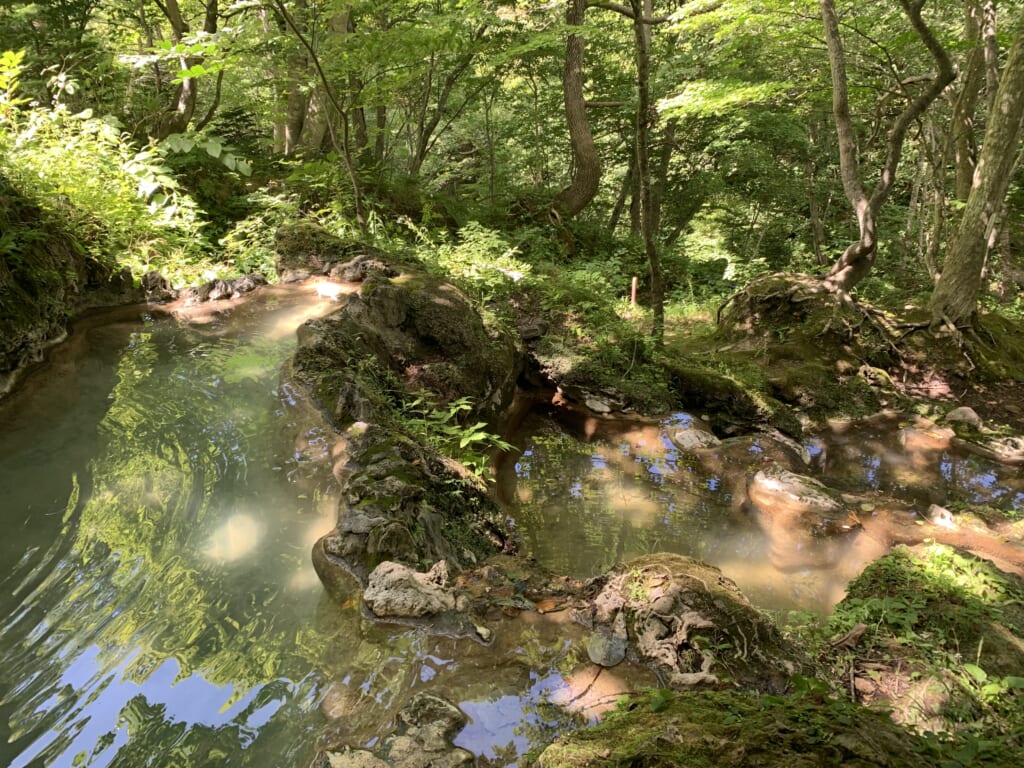
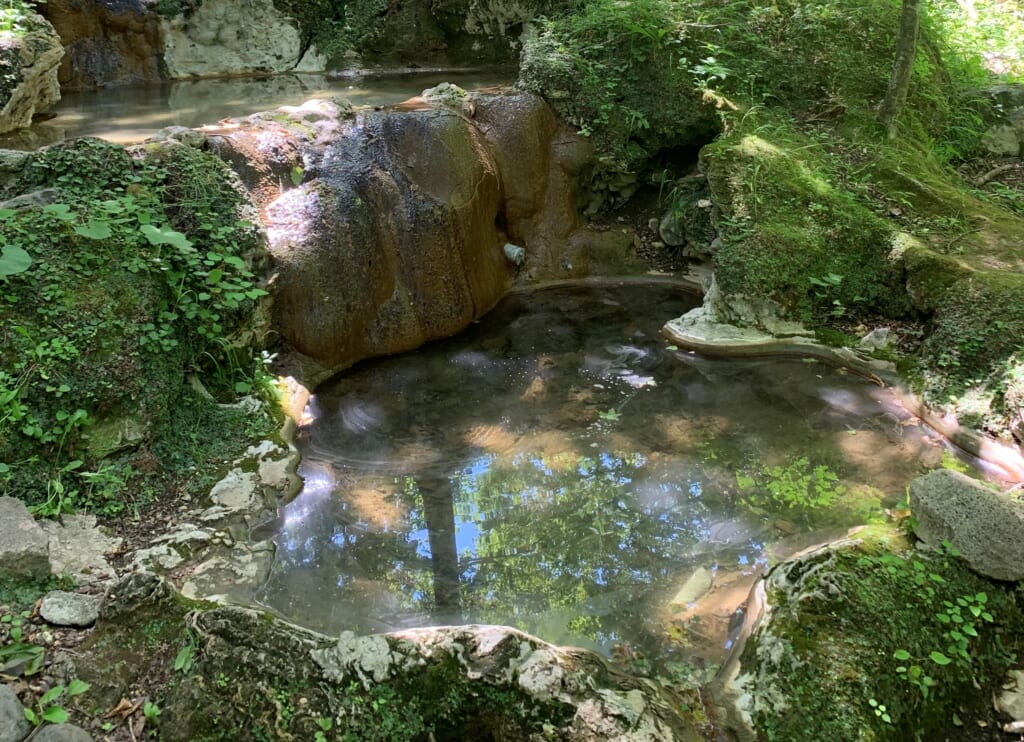
A little further inland of the peninsula, a hot spring emerges from the mountain around Kamuiwakka Waterfalls (カムイワッカ湯の滝). As a sign of the place’s sacredness, this name means “water of the kamis” in Ainu language. The water runs down the mountain by a stone path. It stops over in several natural pools before flowing into the sea. Aquatic shoes are recommended because you have to wet your feet in the water. The soles of the feet are caressed by the smoothness of the rock and the water’s warmness. The waterfall and the natural pools upstream are the only waters Hokkaido that never freeze. On that day, the blanket of frog envelops the forest, and that lends to the moment an unreal and almost phantasmagorical atmosphere. Brrr!
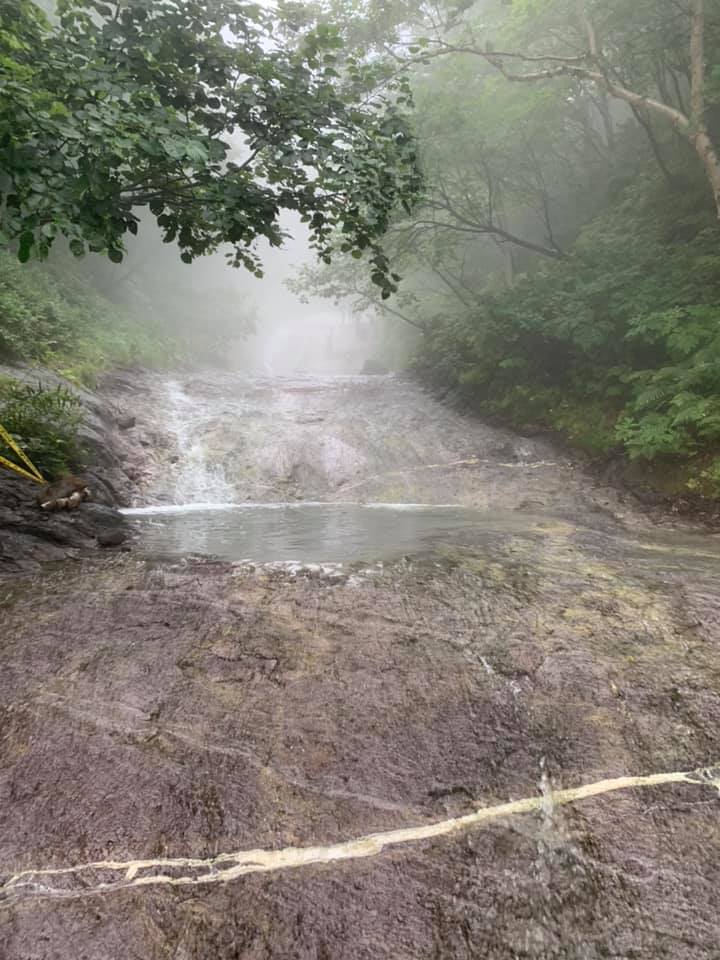
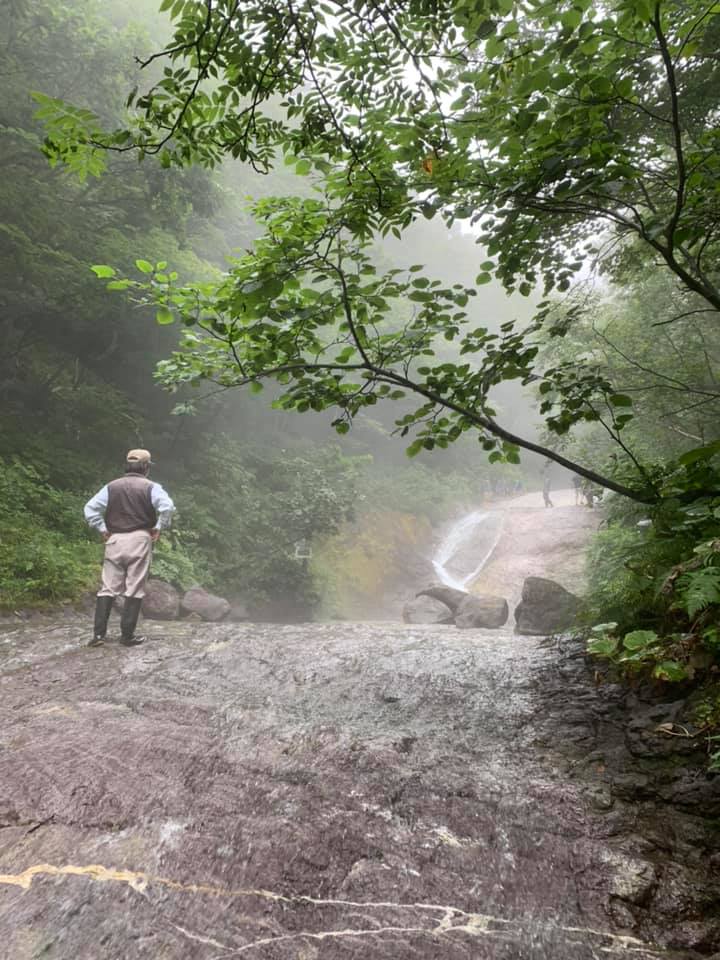
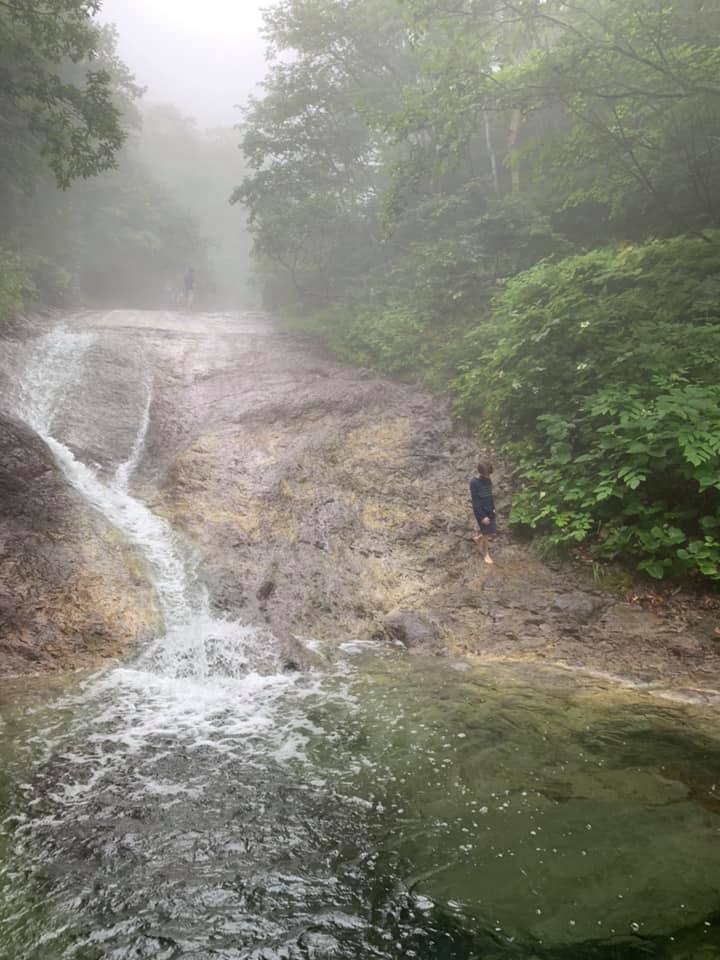
All the sources flow into the Sea of Okhotsk (オホーツク海) through waterfalls. In a rocky cove, Furepe Waterfall (フレペの滝) emerges from cliffs and rushes to the sea. In the evening, the last sunbeams of daylight glimmer toward the West and fade into evening.
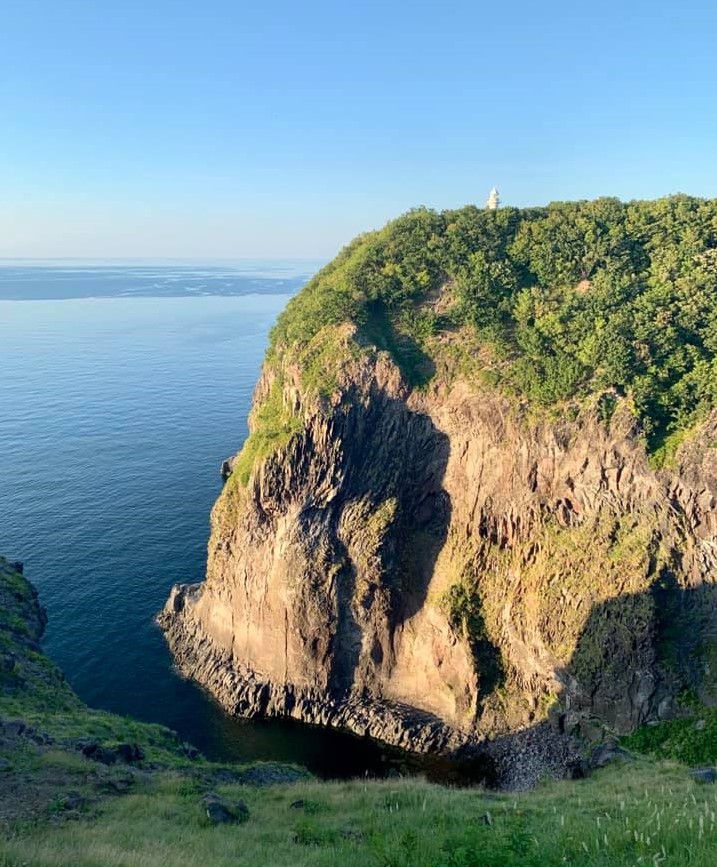
To discover the peninsula on the seaside, you can take a boat ride that runs along the coast by boat with views from windswept cliffs to waterfalls. It is time to take binoculars and to observe wildlife. Down the mountains, deers appear on the shores and I even see an adorable family of brown bears.
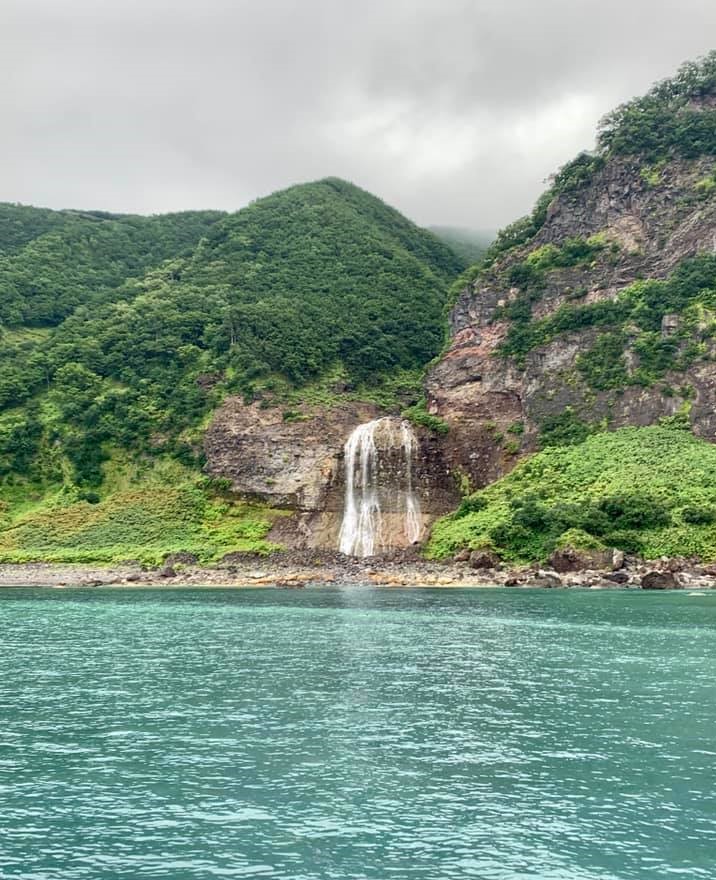
Practical Information about Hokkaido
Sapporo, the capital of Hokkaido prefecture, is accessible within 1 hour and 35 minutes by plane from Tokyo Haneda Airport (羽田空港), or approximately 2 hours from Osaka.
It is also possible to reach the island by train, with the Shinkansen-Hokkaido line. This underwater tunnel connects Aomori, at the north end of Honshu, to Hakodate, in the South of Hokkaido. The train makes the trip from Tokyo to Hokkaido in just over 4 hours. The Shinkansen-Hokkaido train is now included in the Japan Rail Pass.
- Daisetsuzan National Park official website
- Eastern Hokkaido National Park official website
- Visit Shiretoko National Park official website
- Visit Hokkaido National Park official website
Like few places on earth, Shiretoko, and more generally Hokkaido, allowed me the privilege to see the wildlife roaming freely and elements as if a human being had never existed. Blessed with volcanoes, waterfalls, onsen hot springs, and icy mountains, Hokkaido’s National Parks offers infinite opportunities to provide you an epic hiking trip of a lifetime.
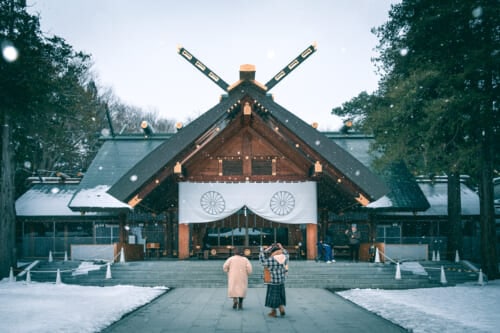
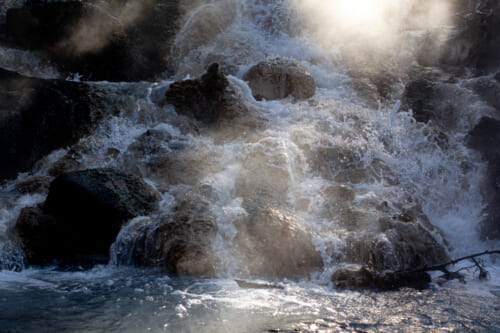

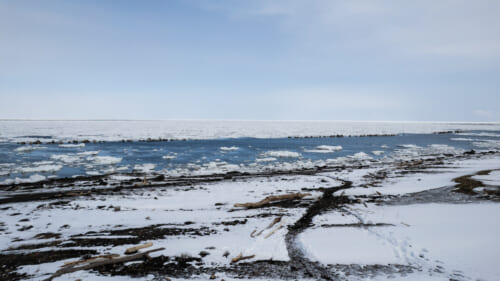
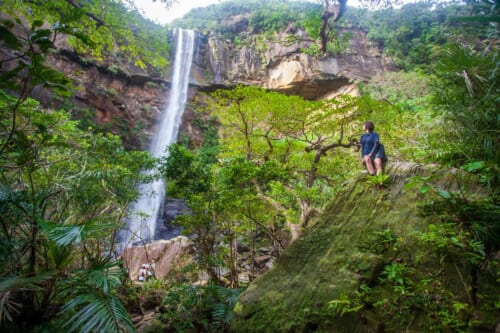
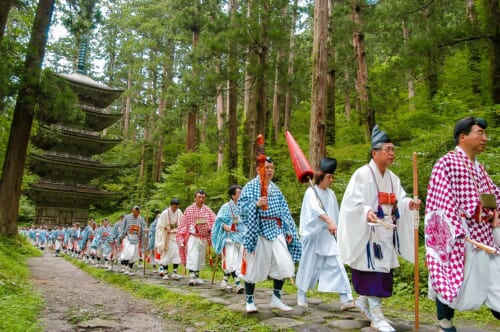
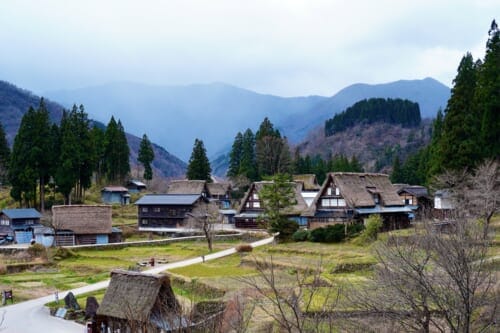
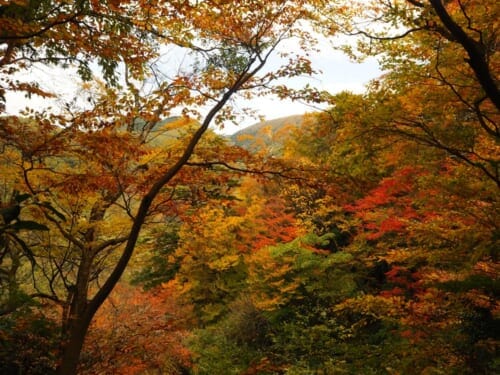
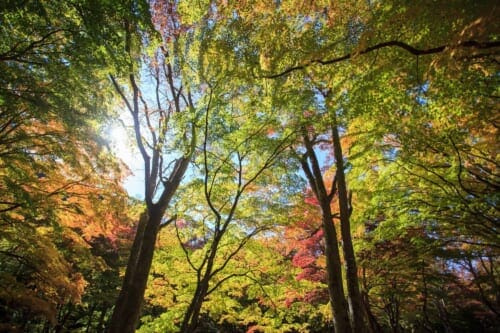


No Comments yet!